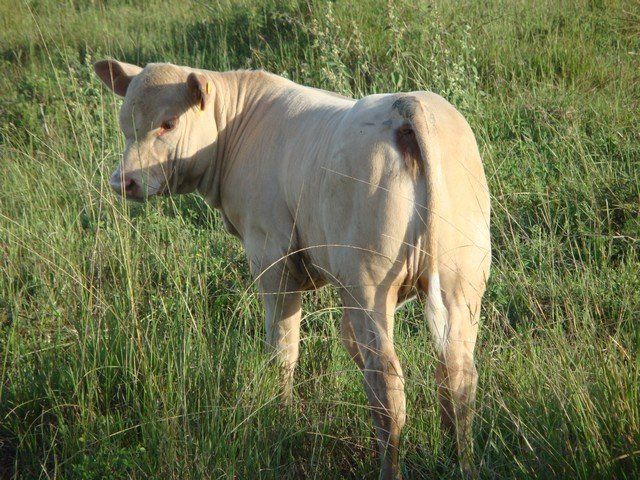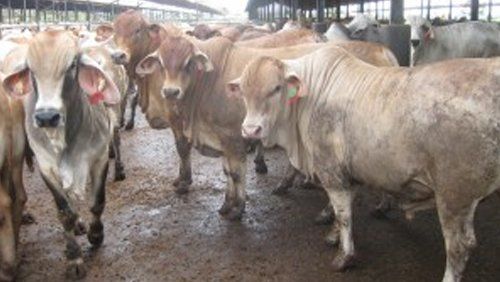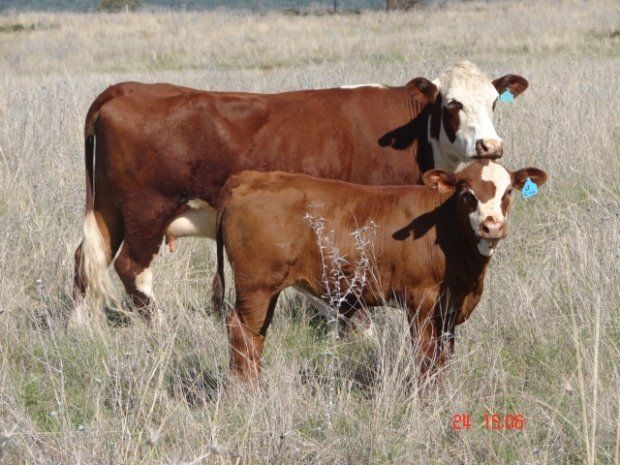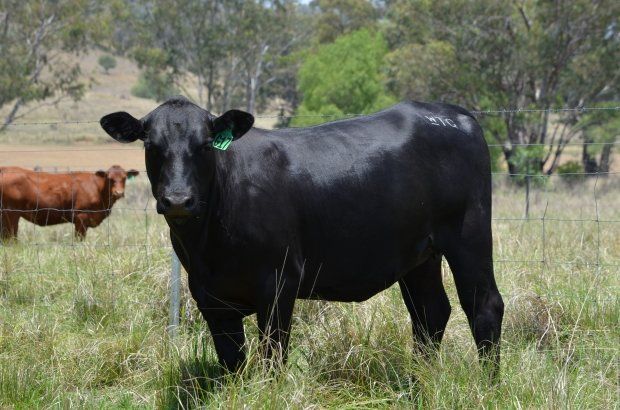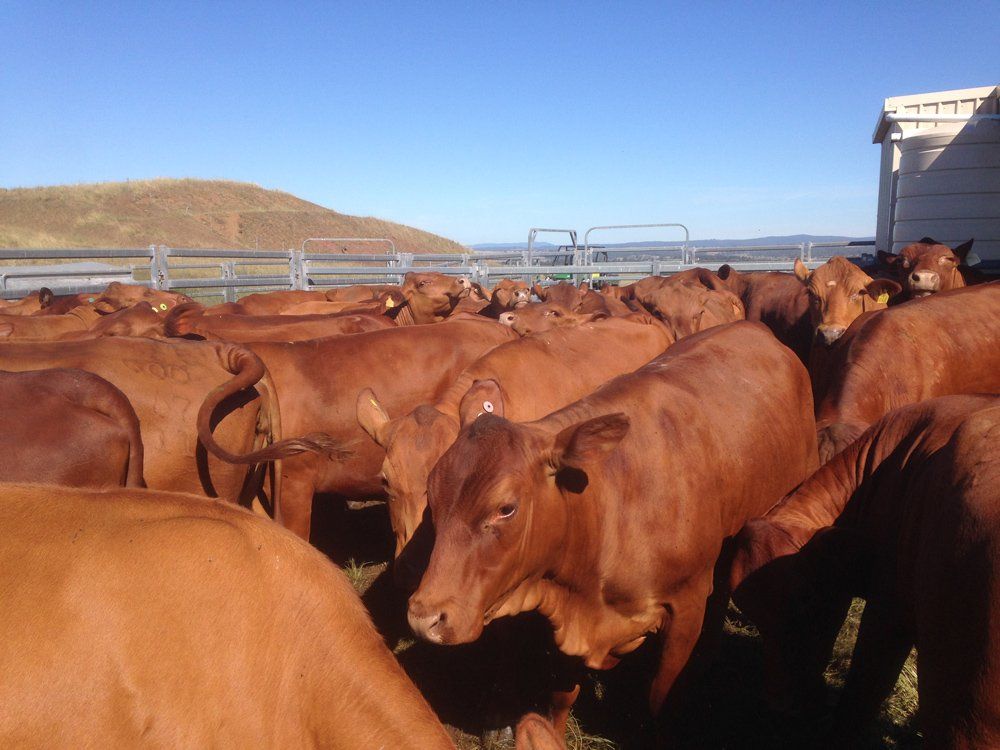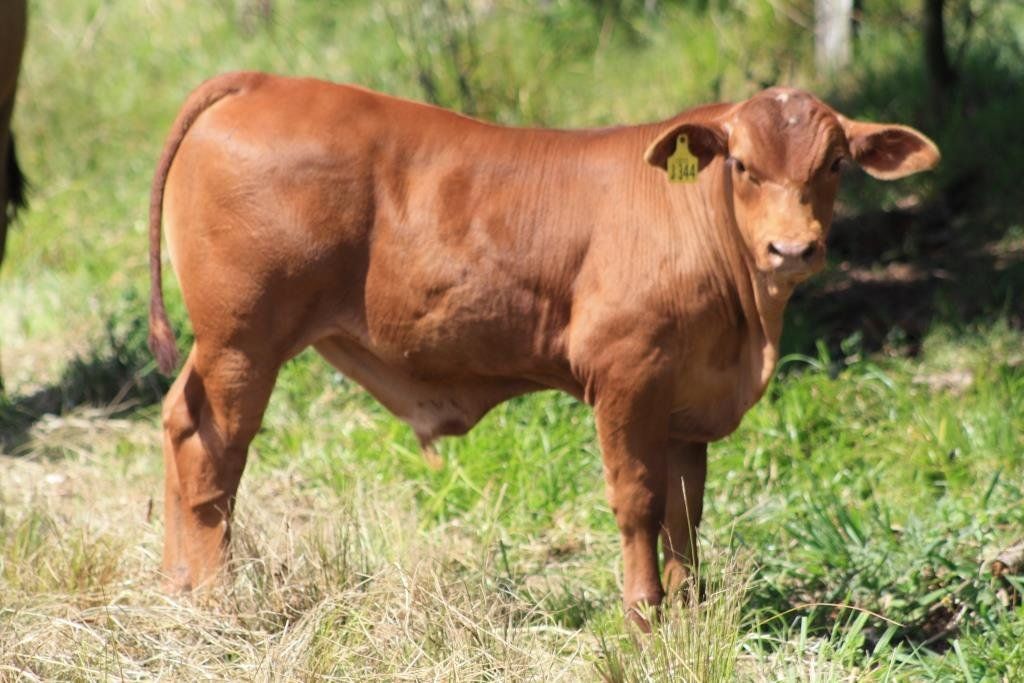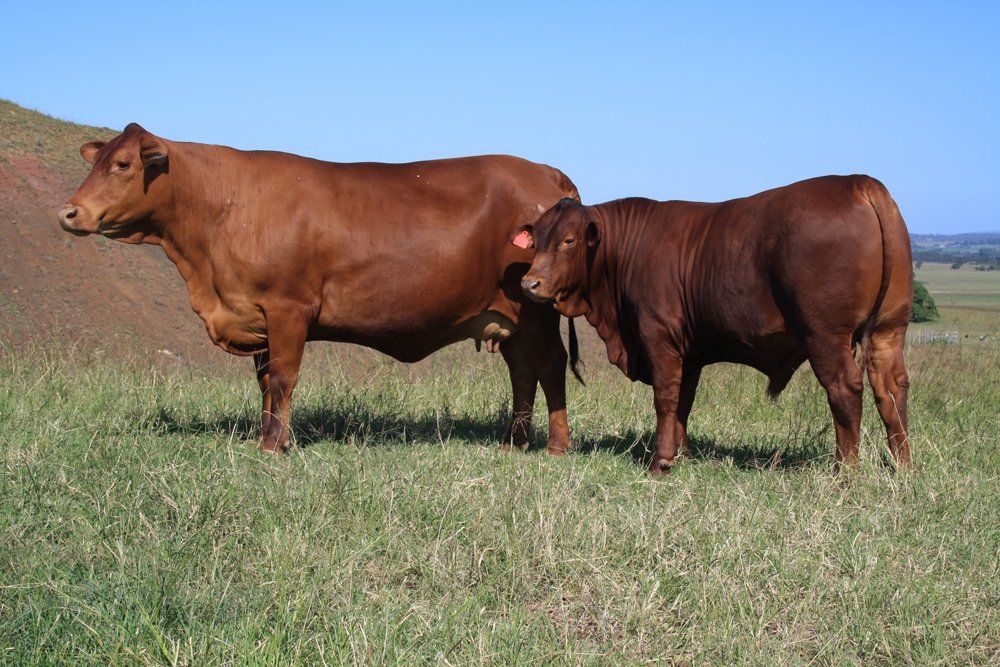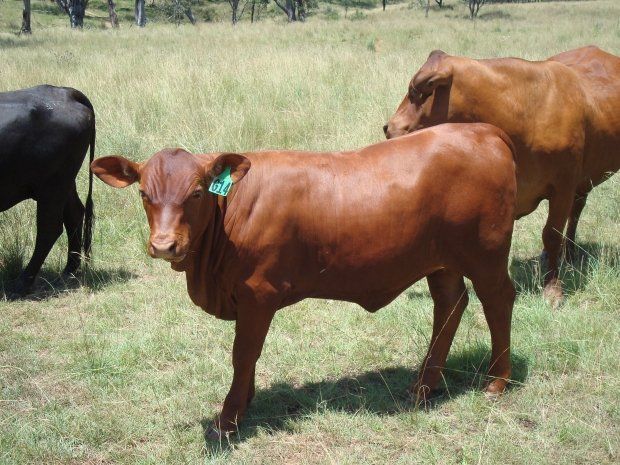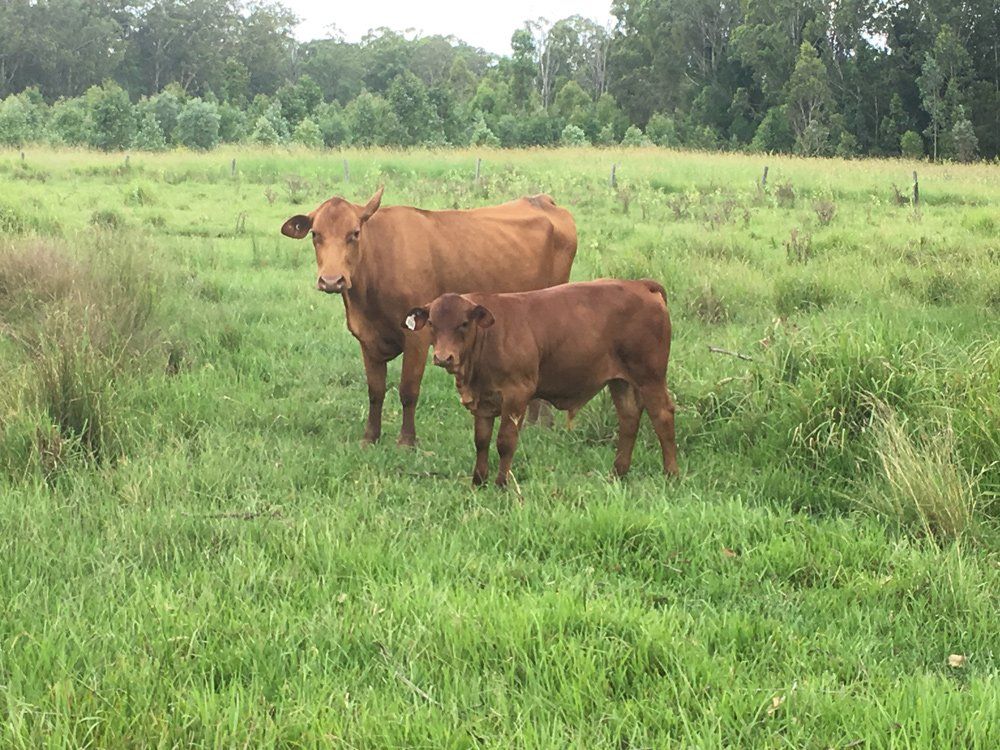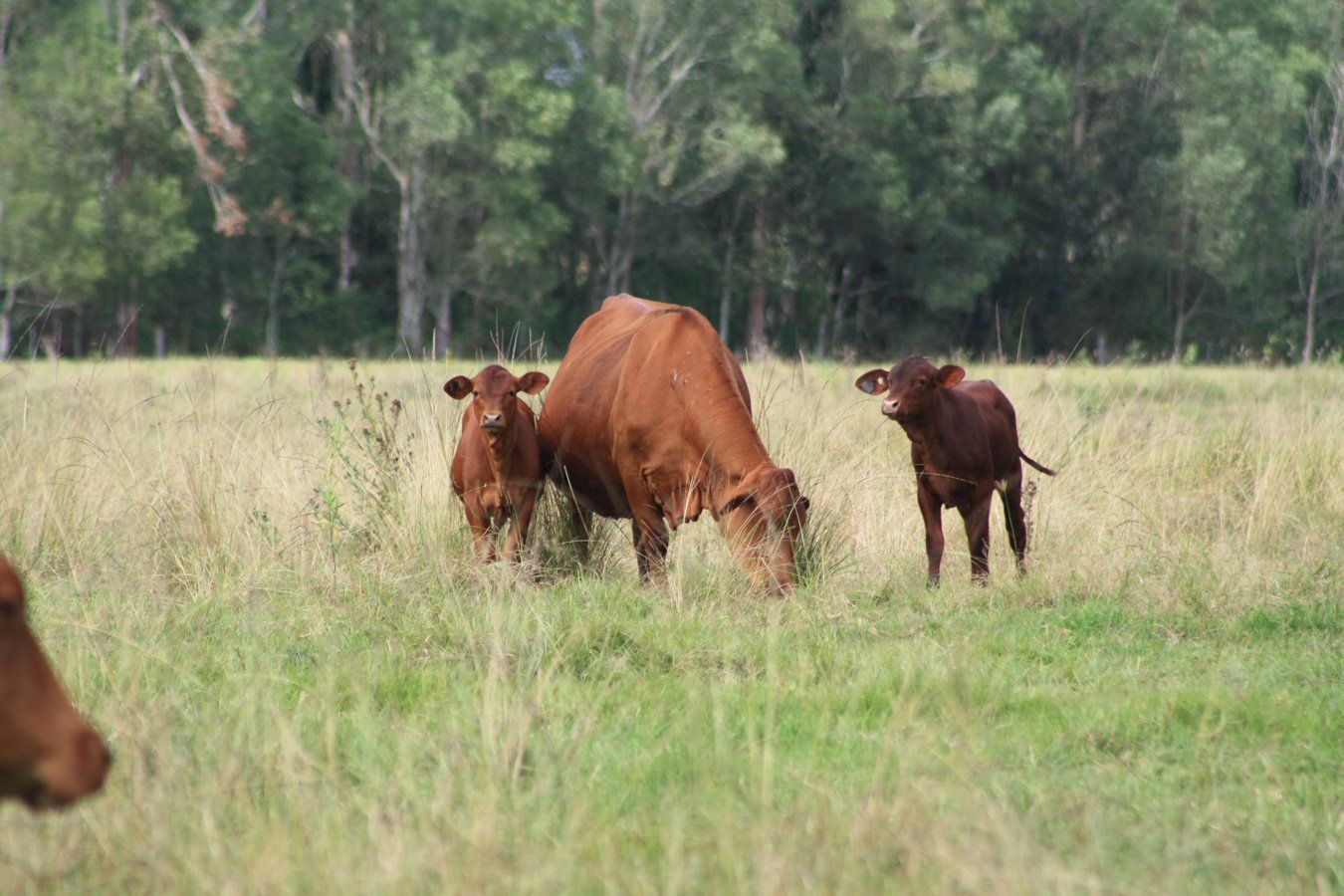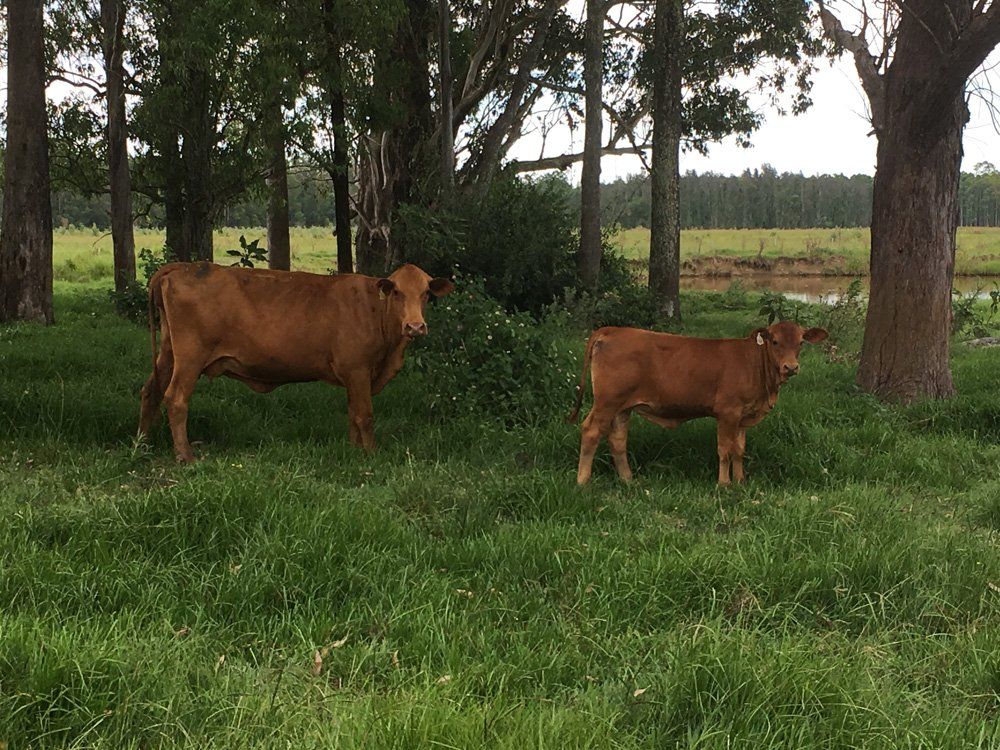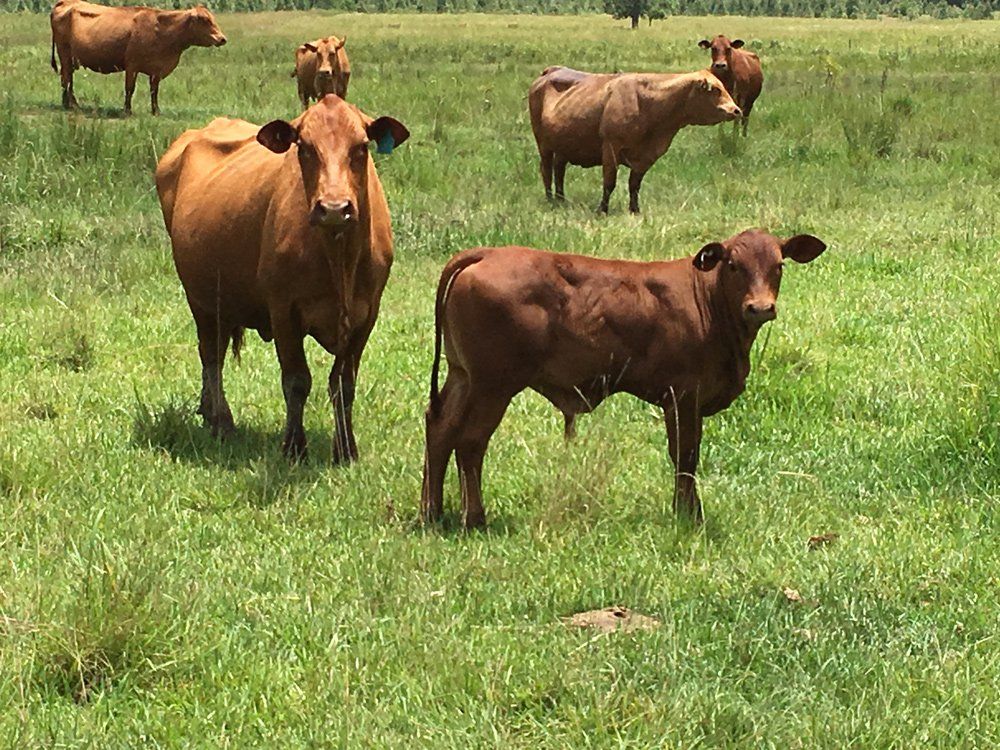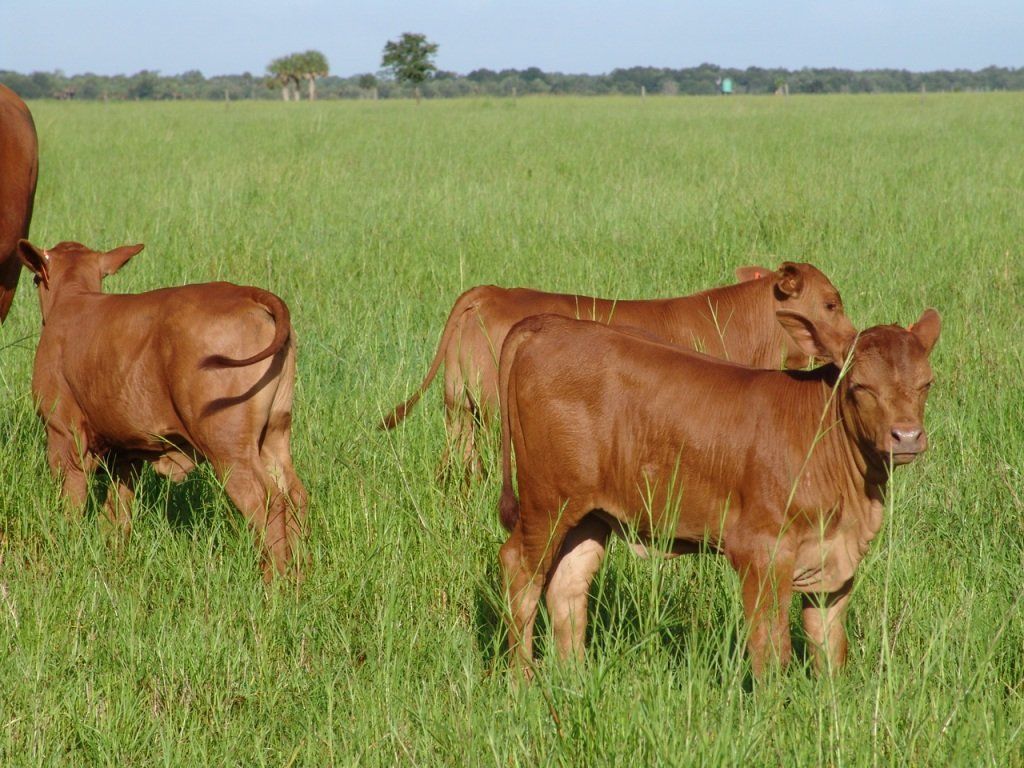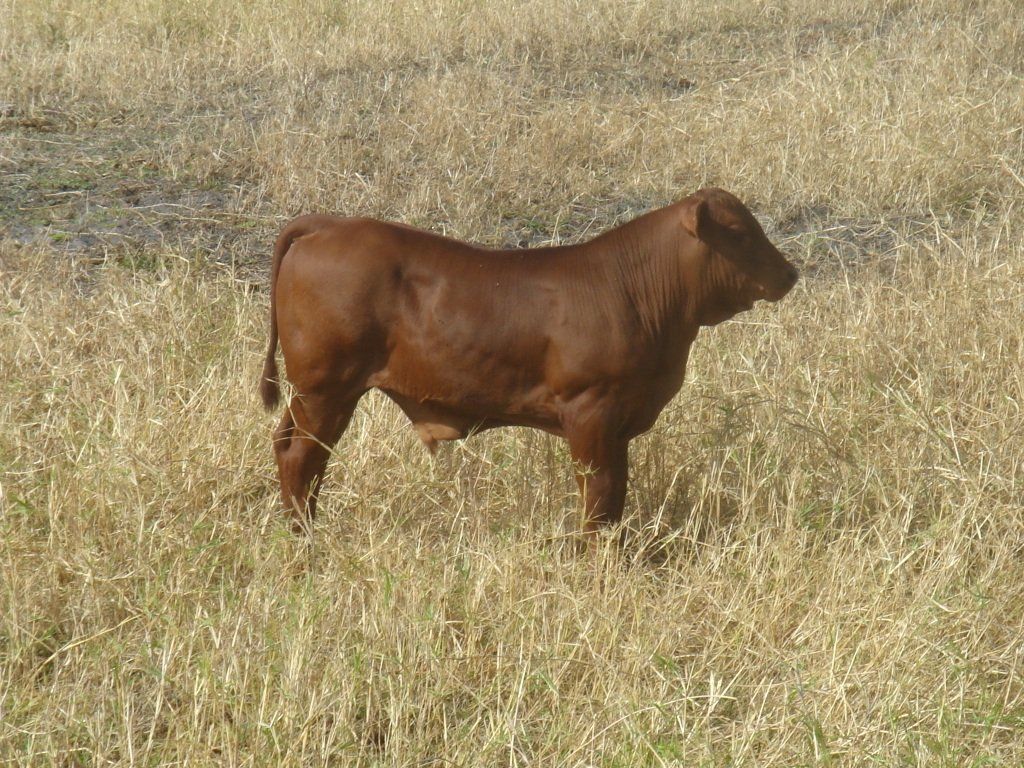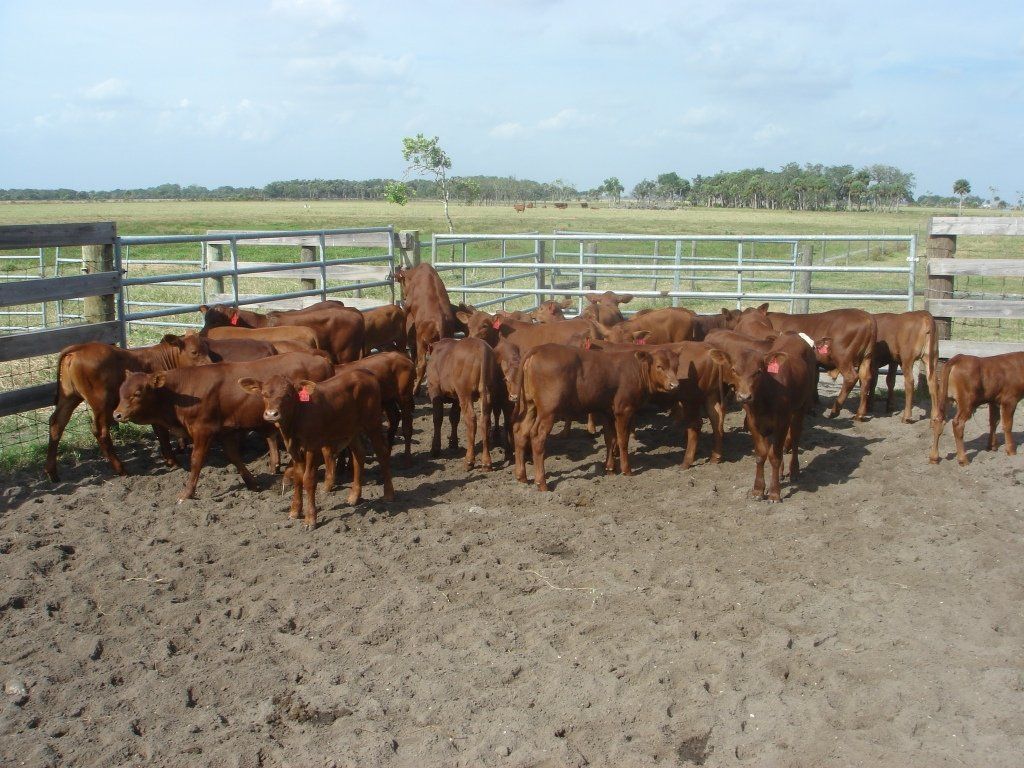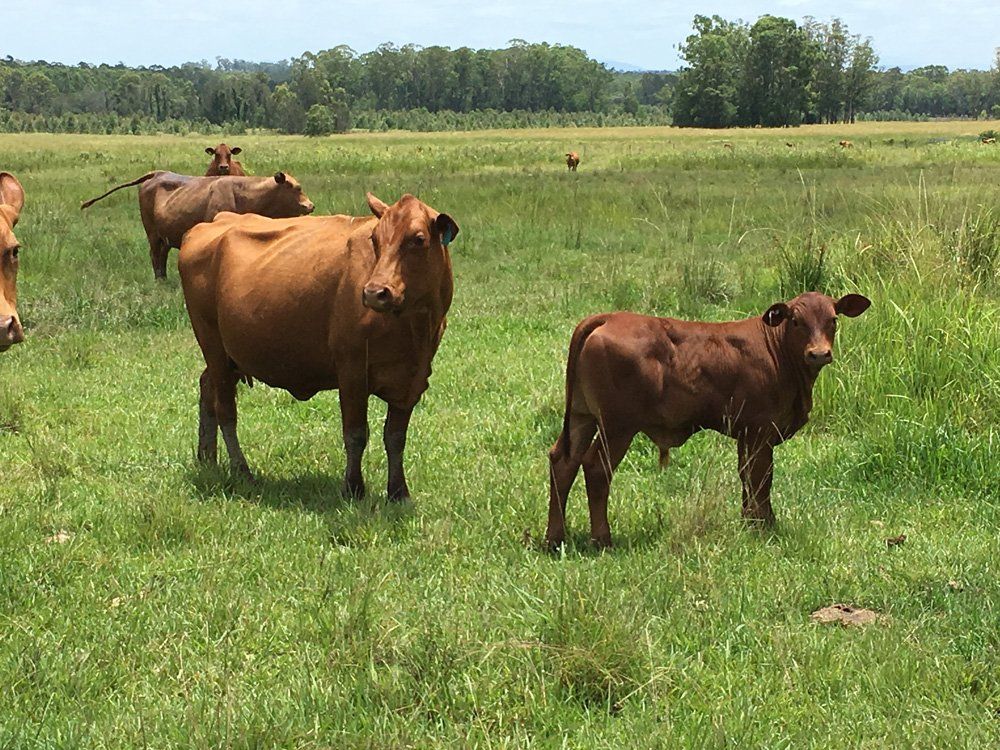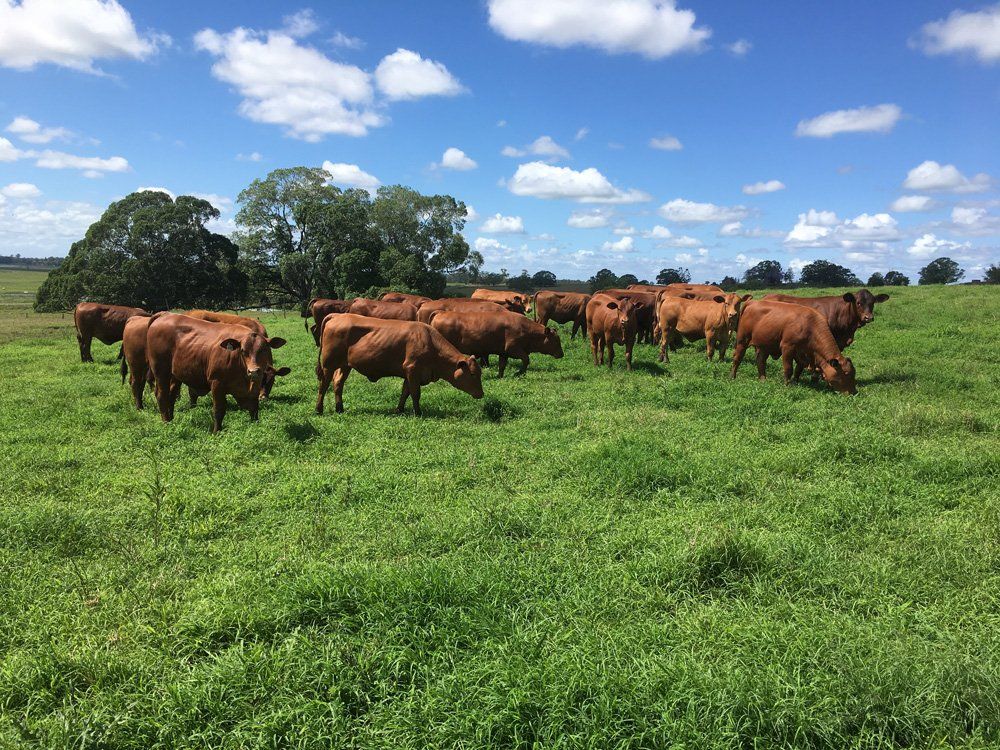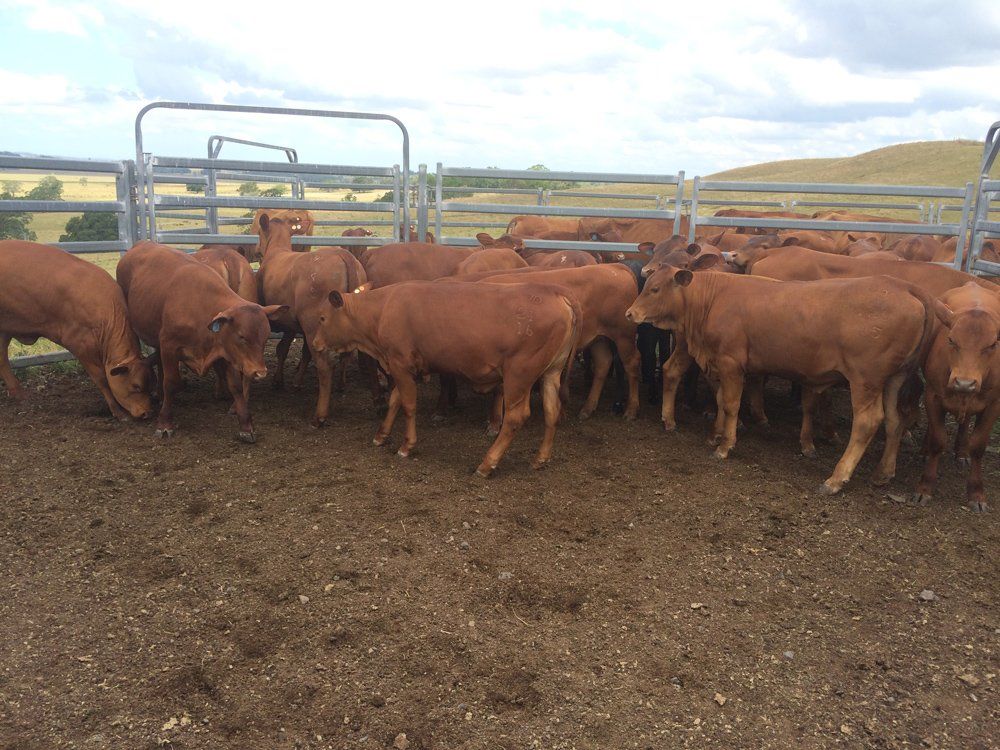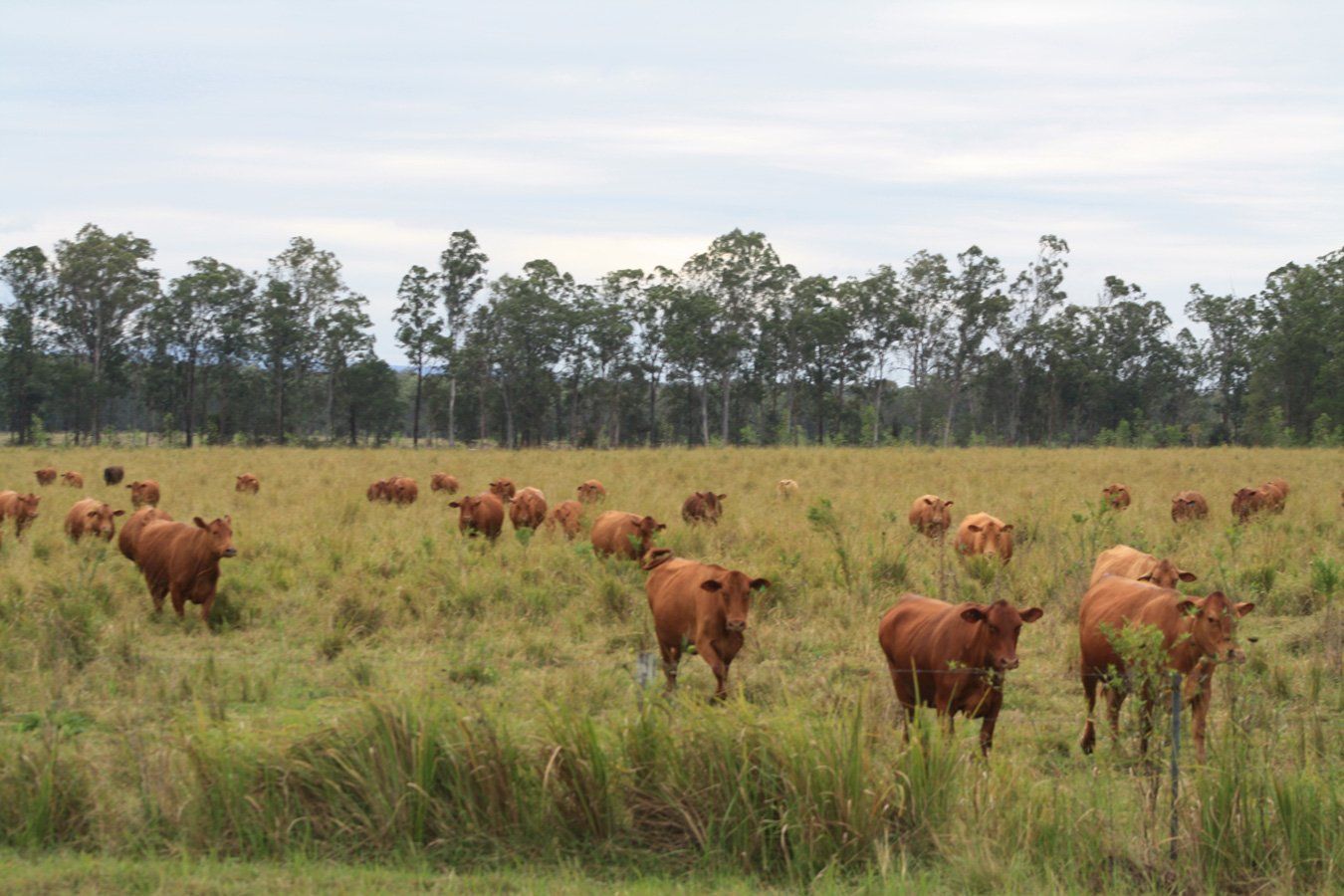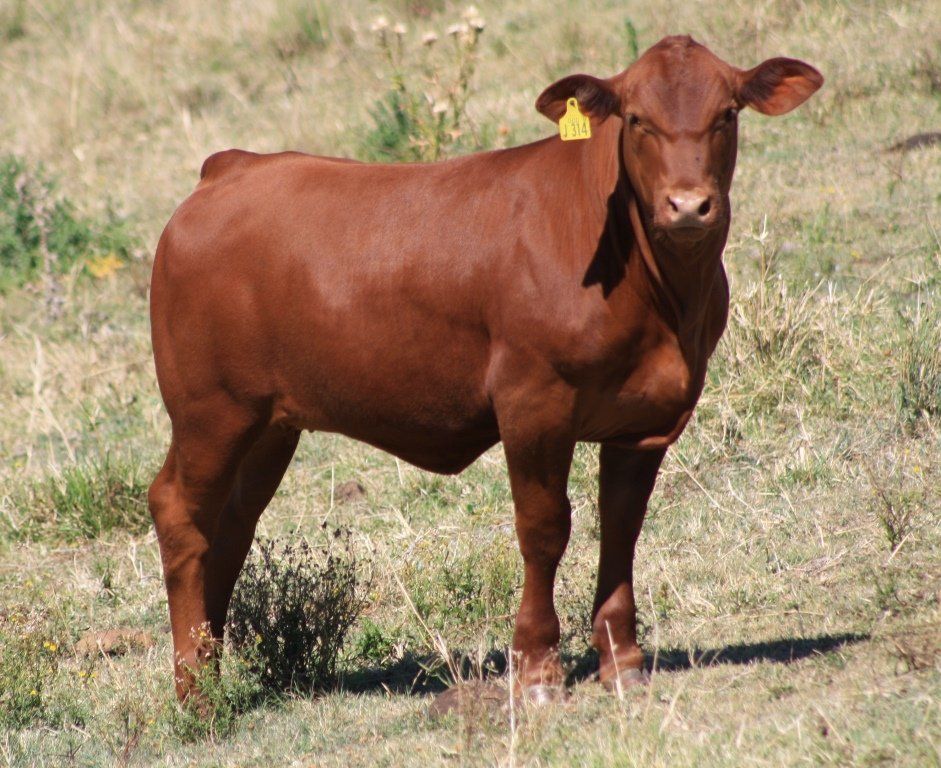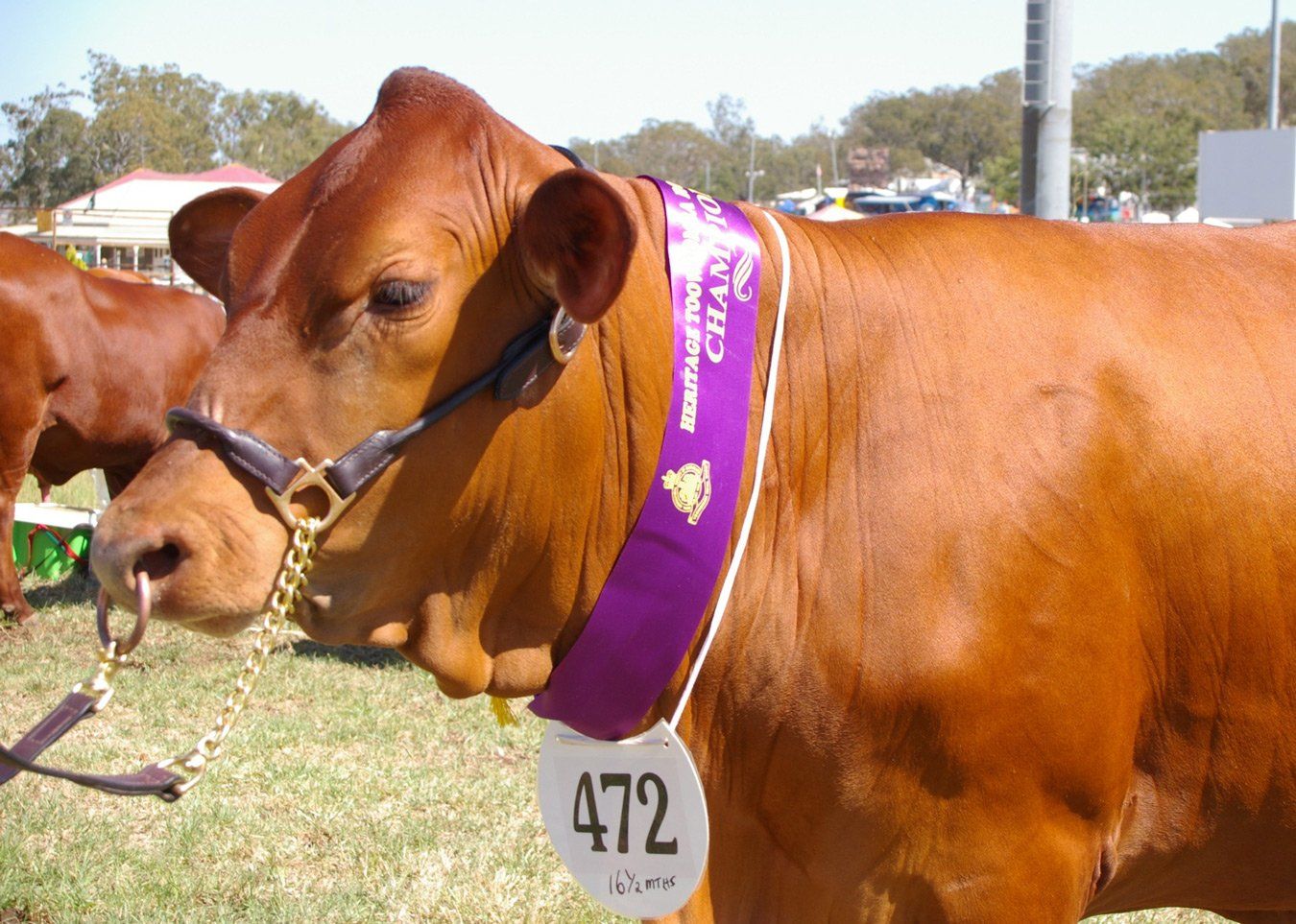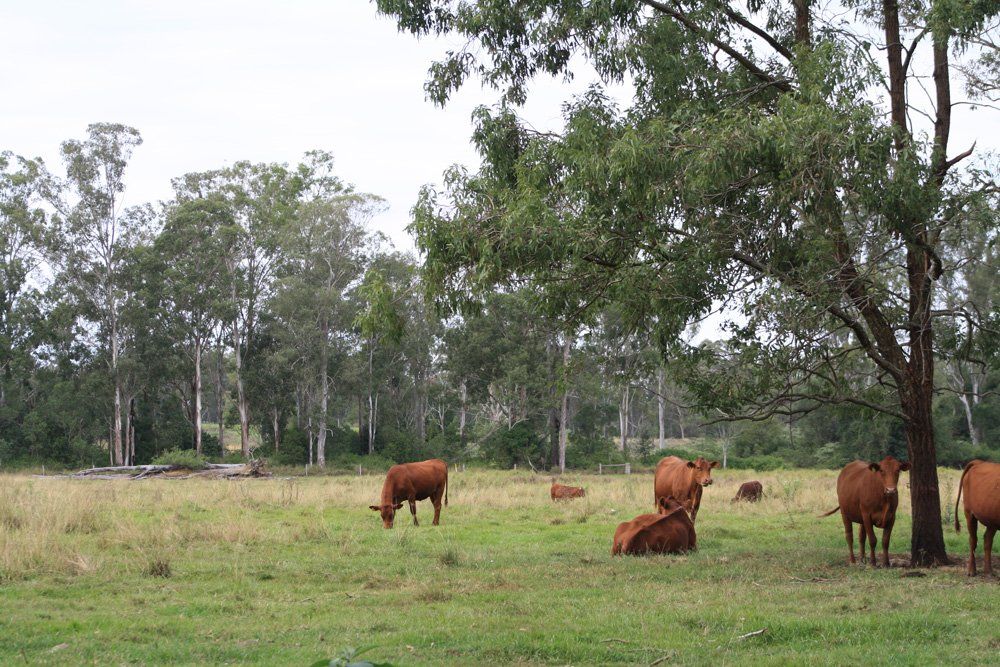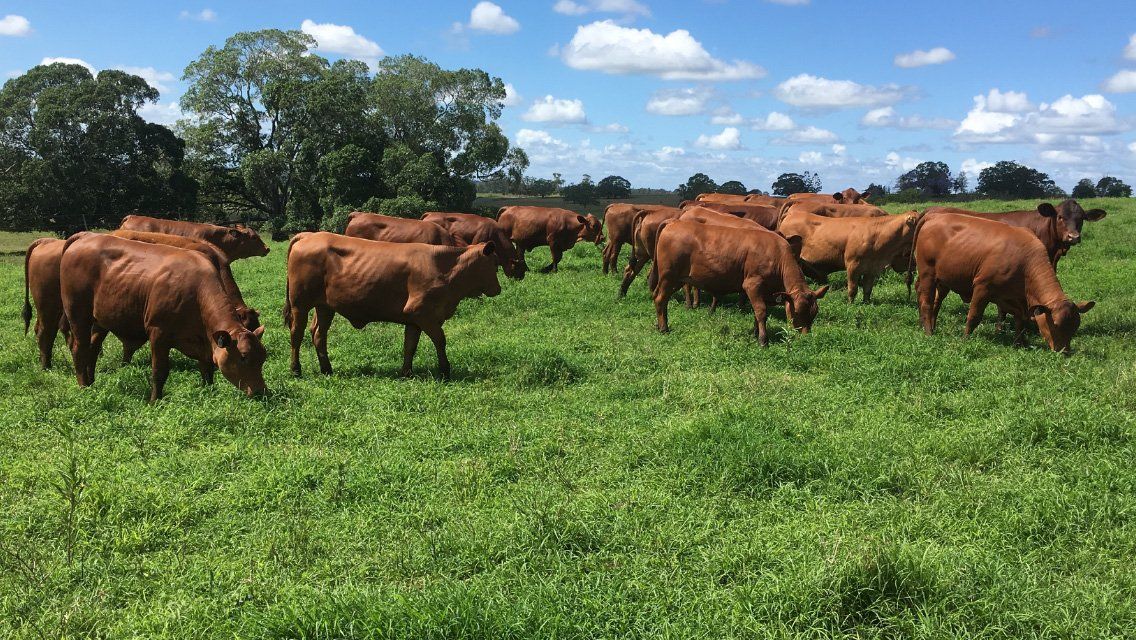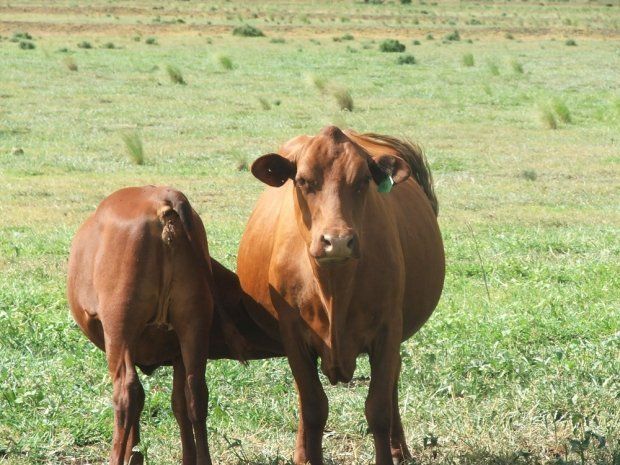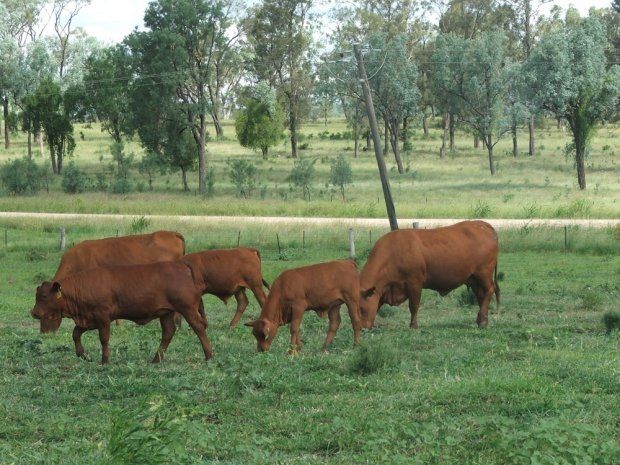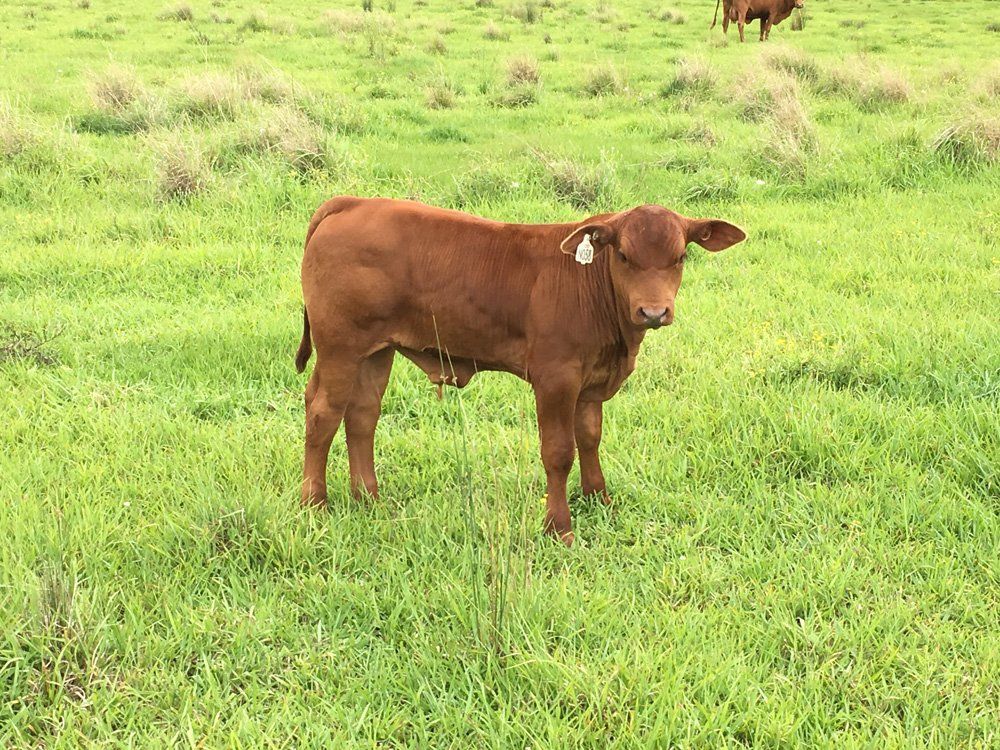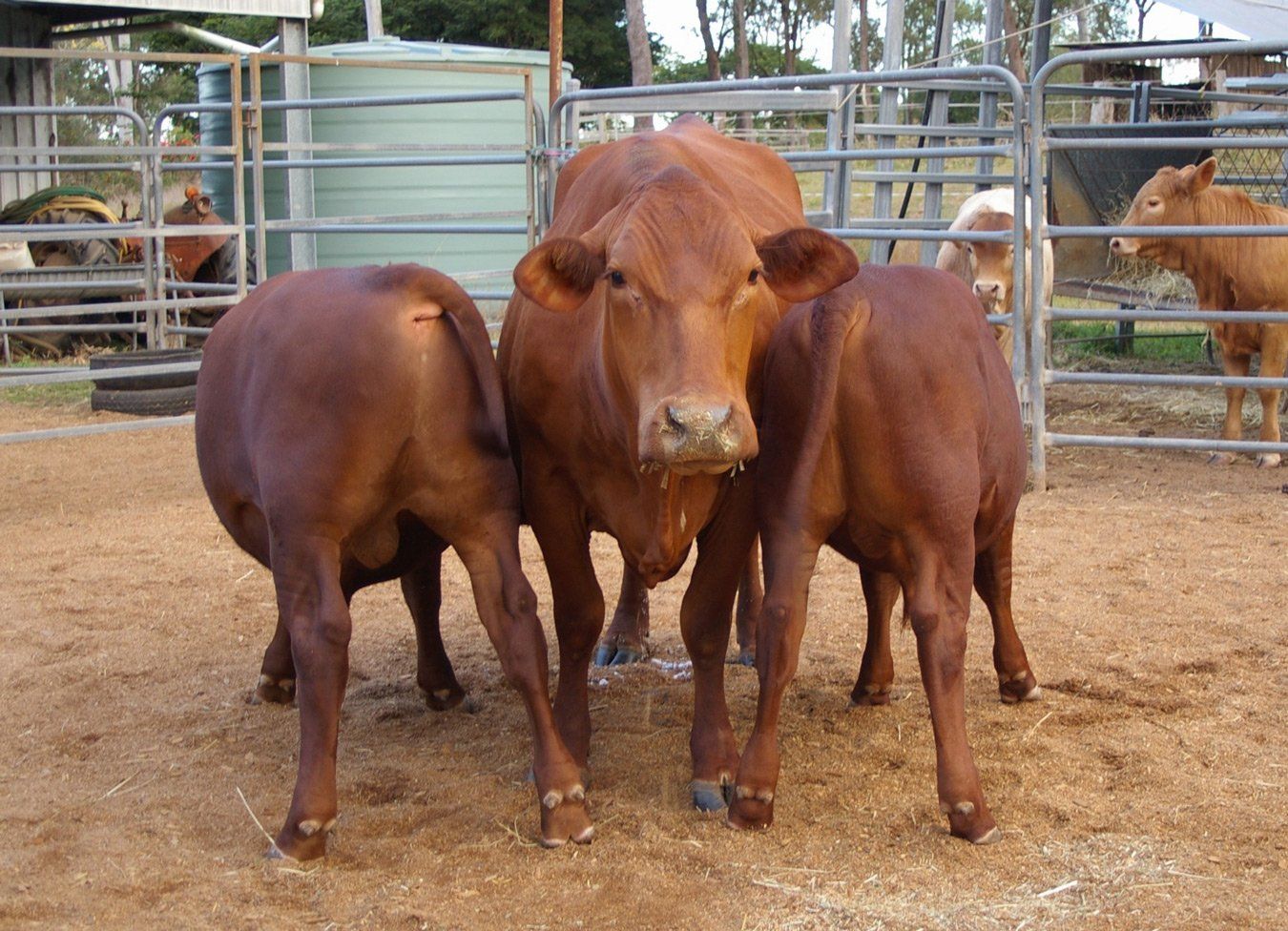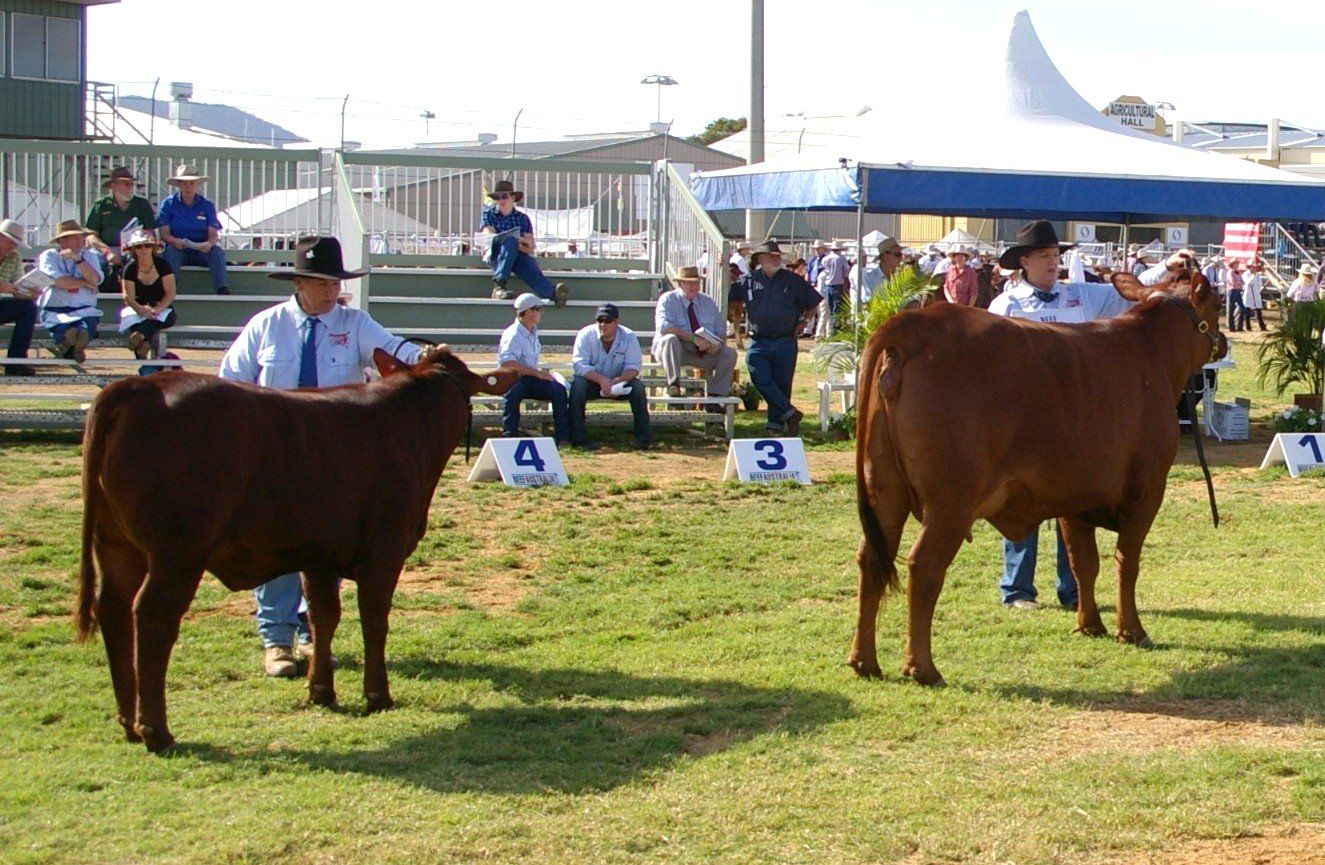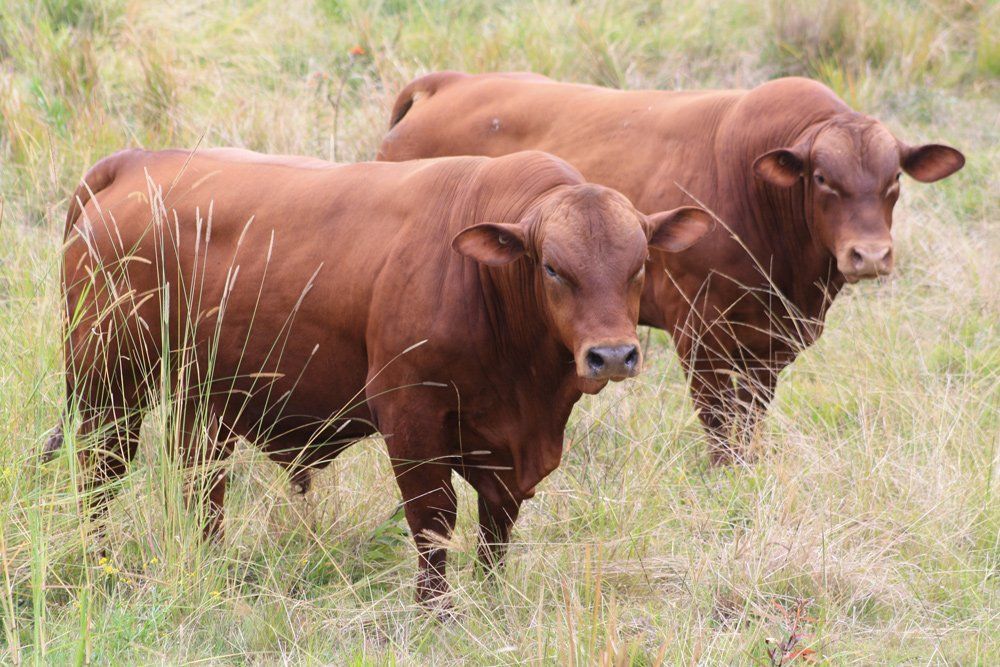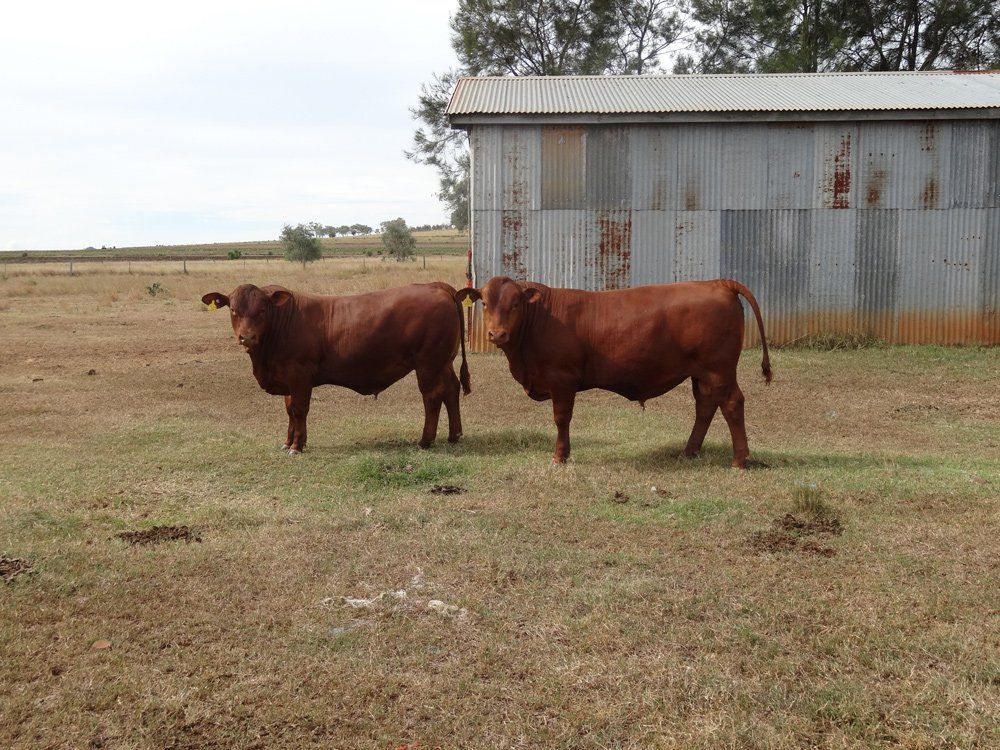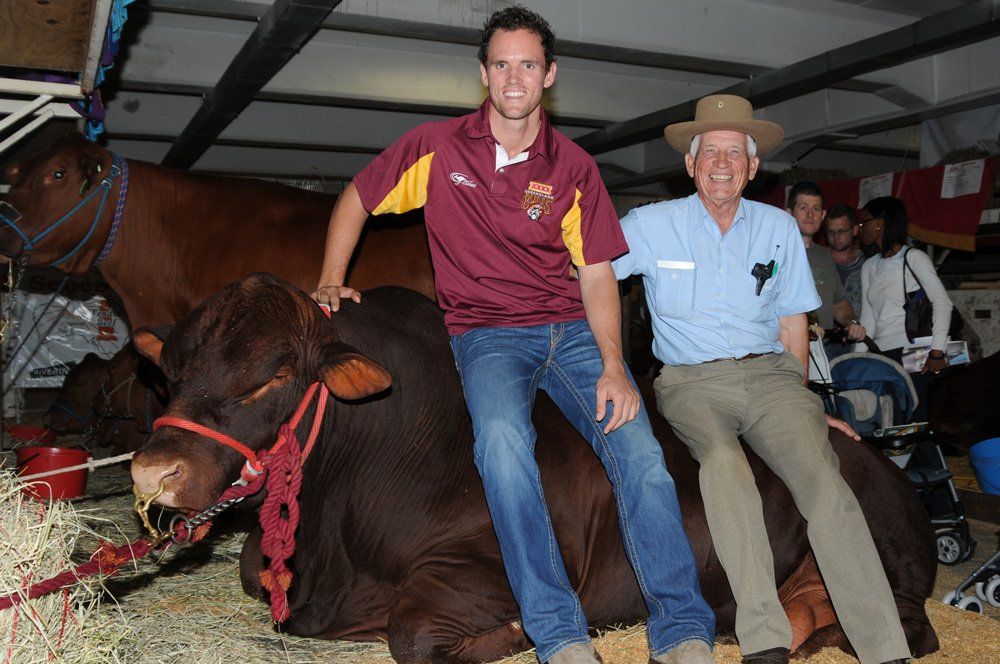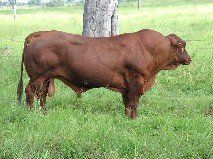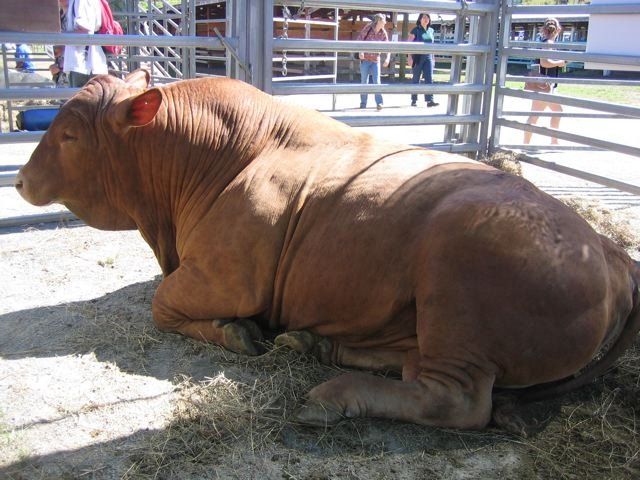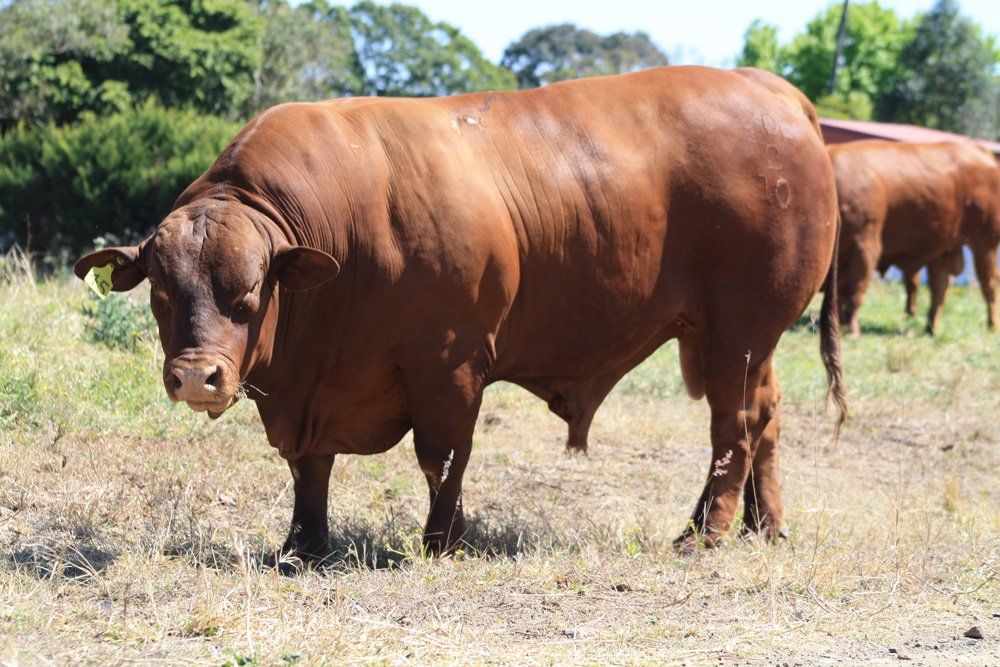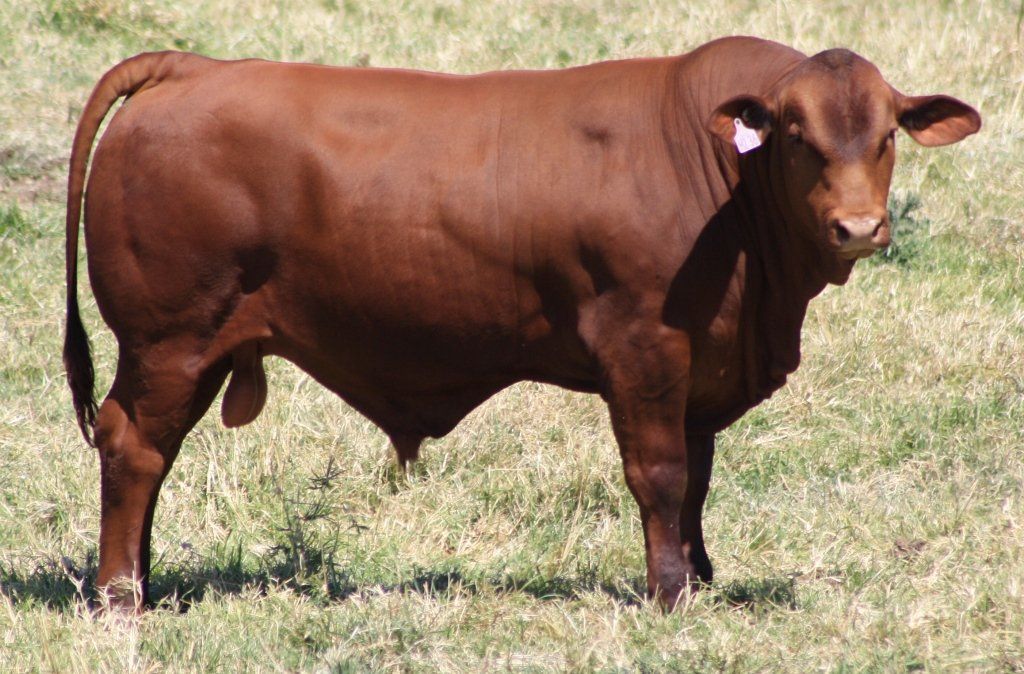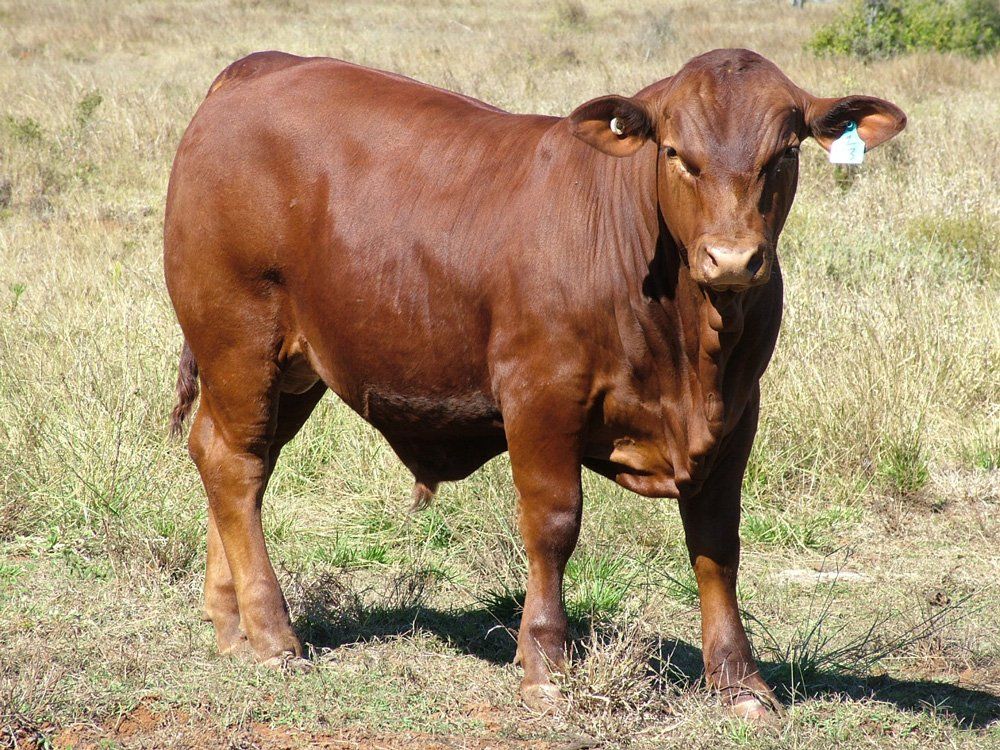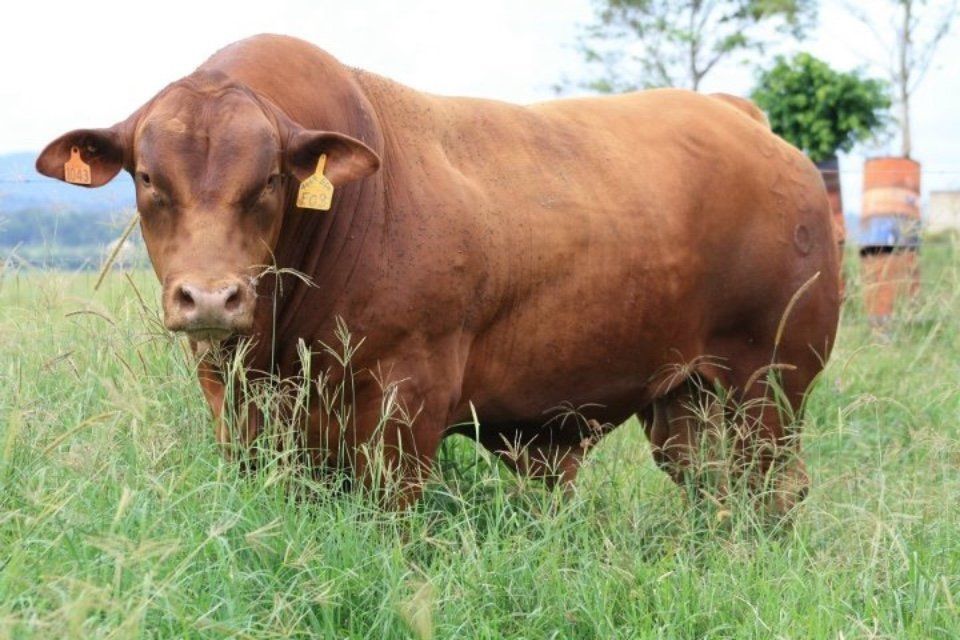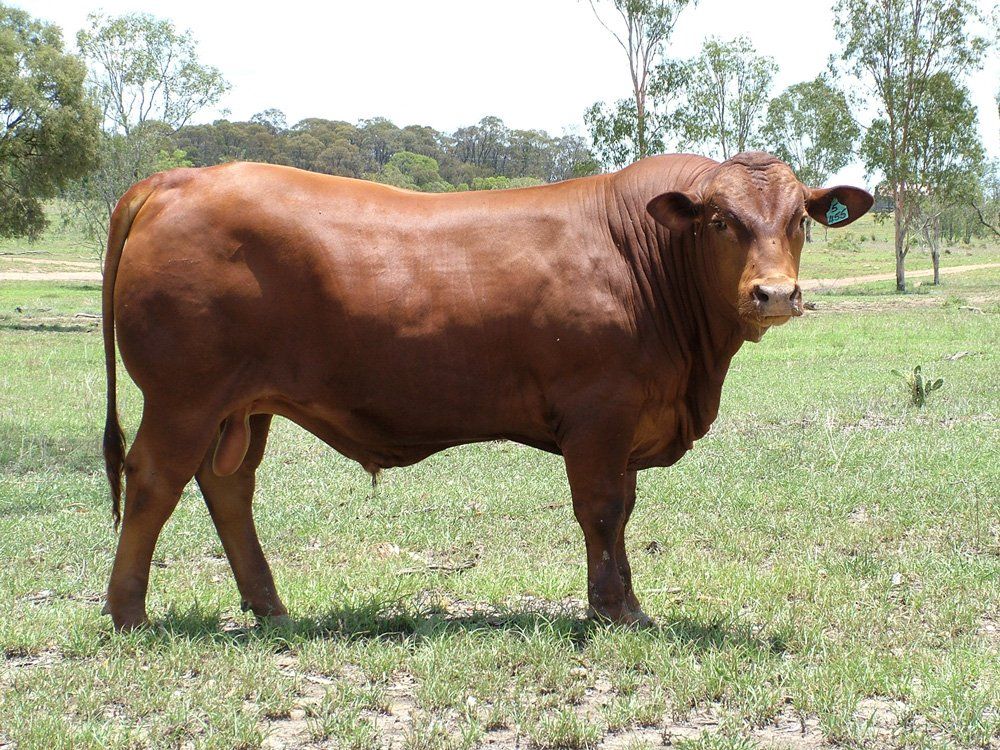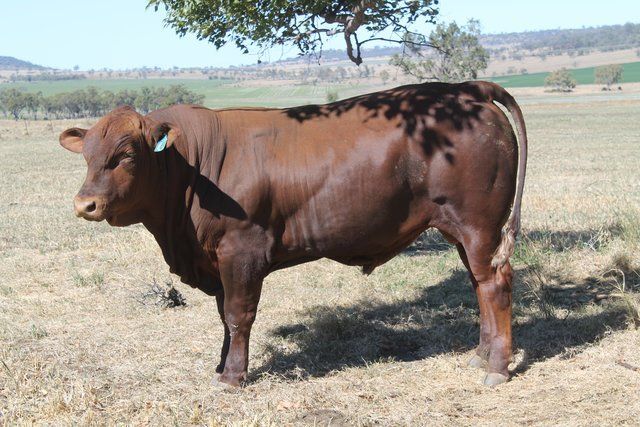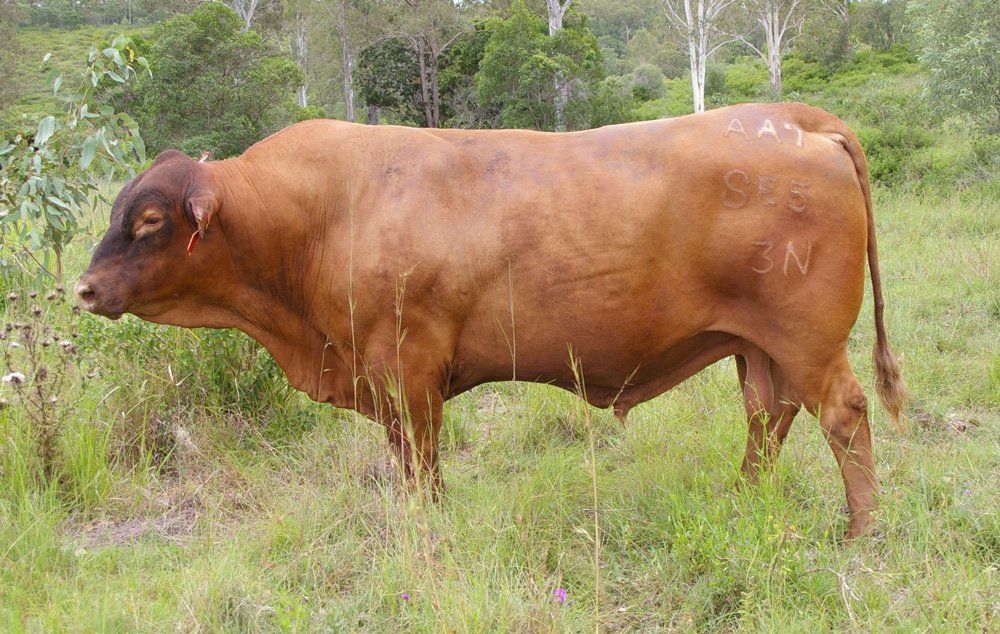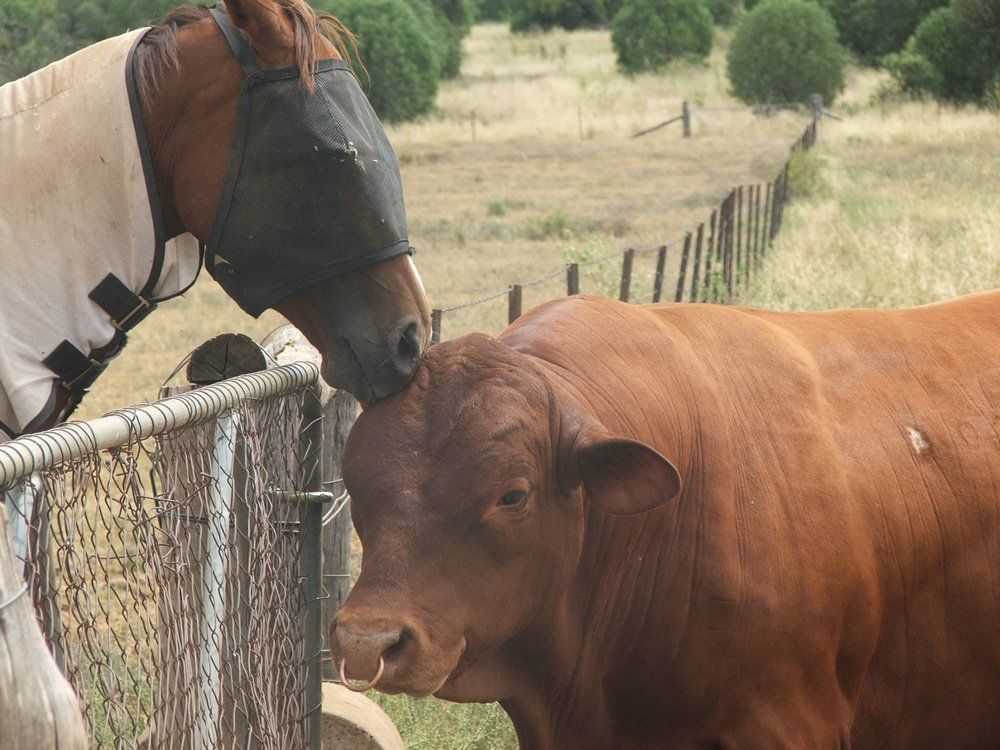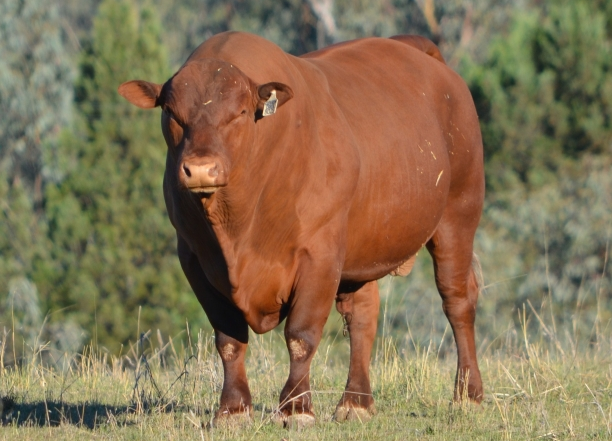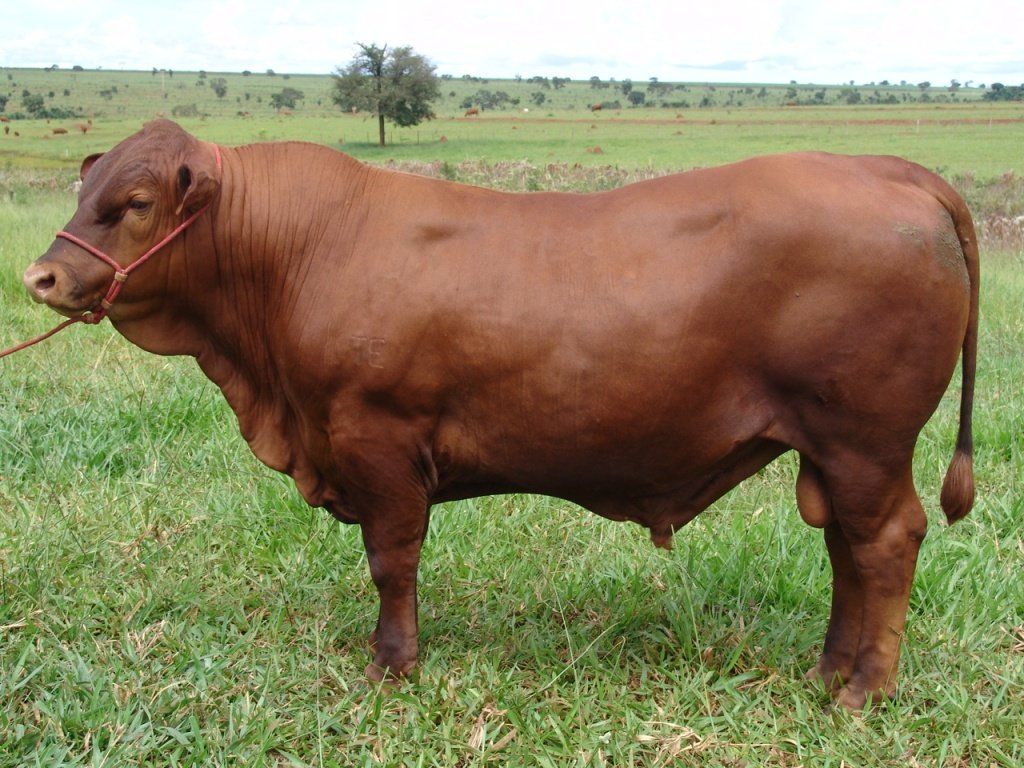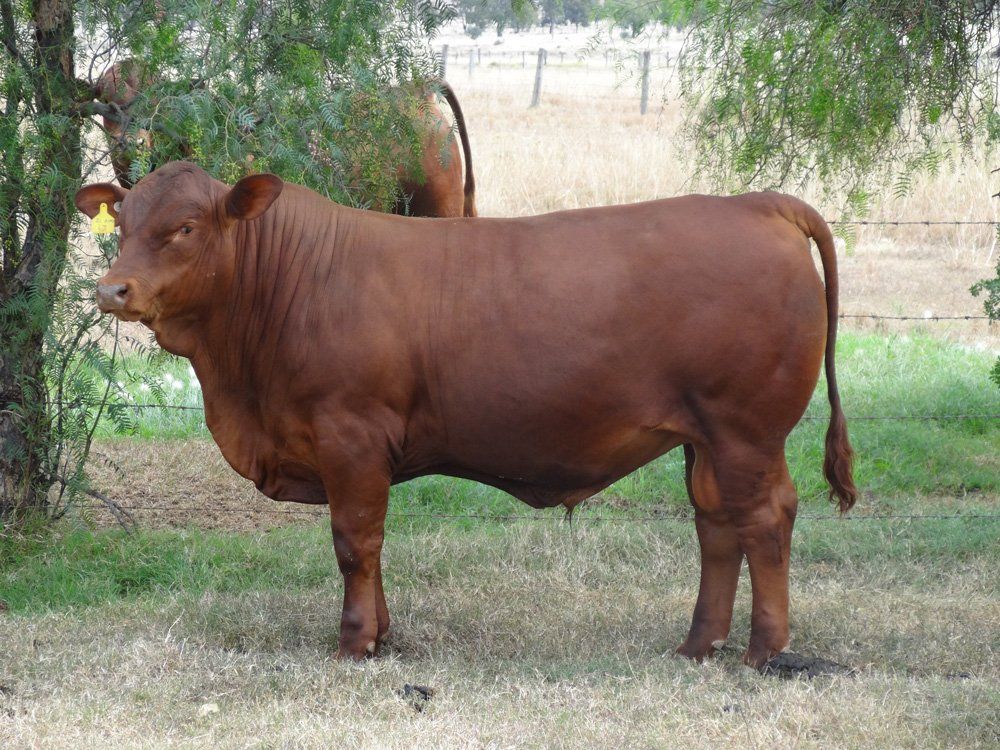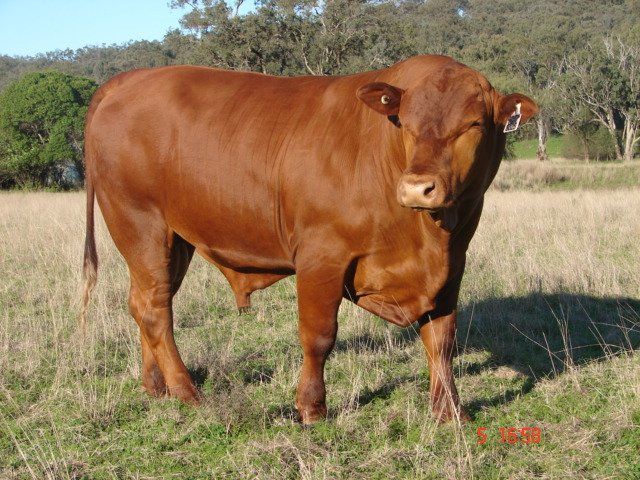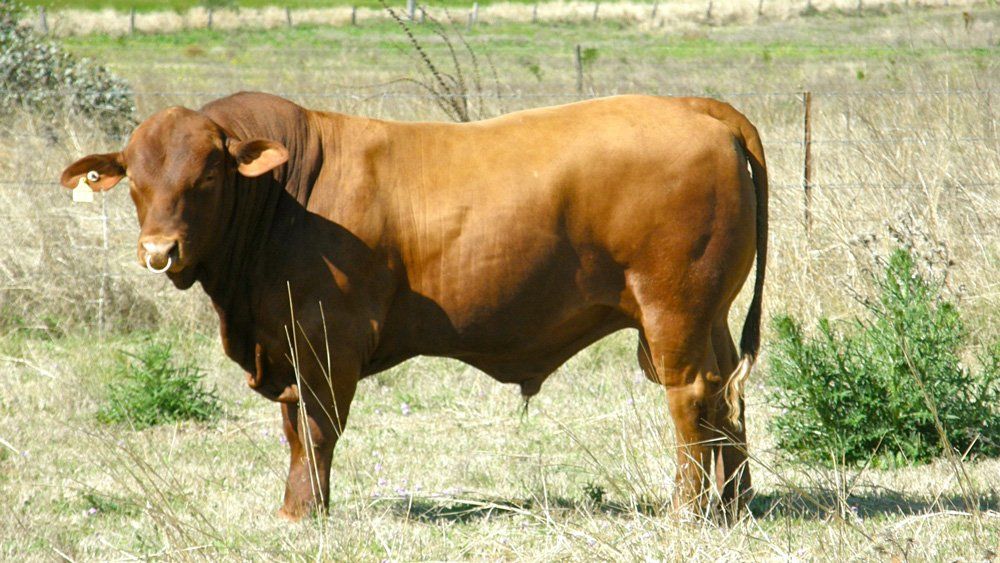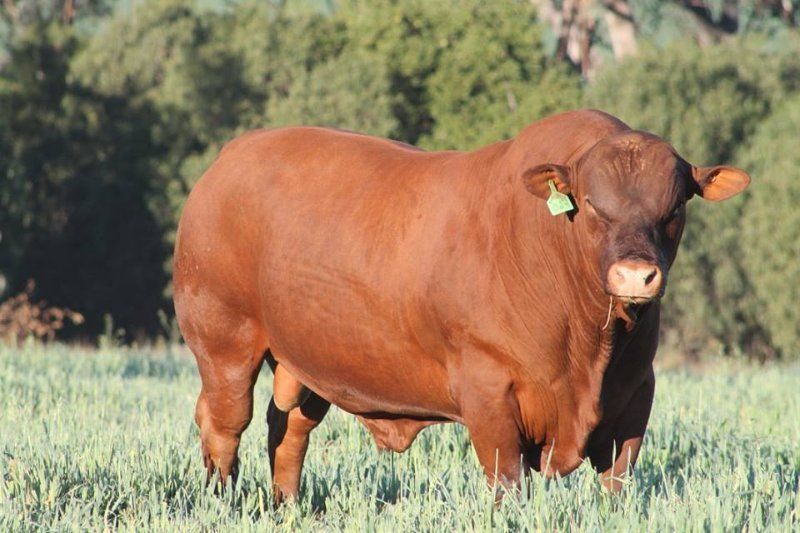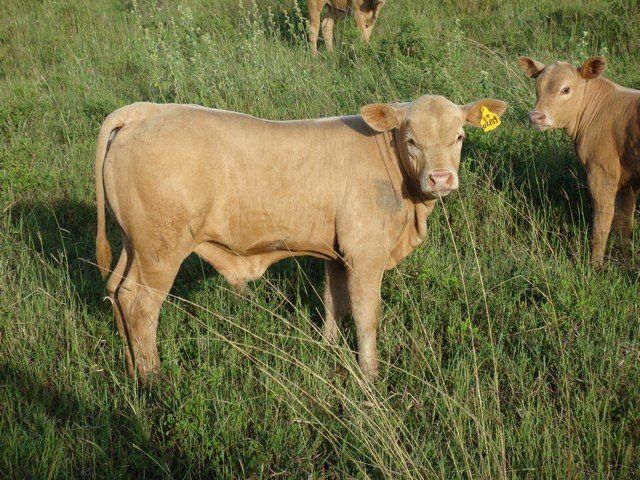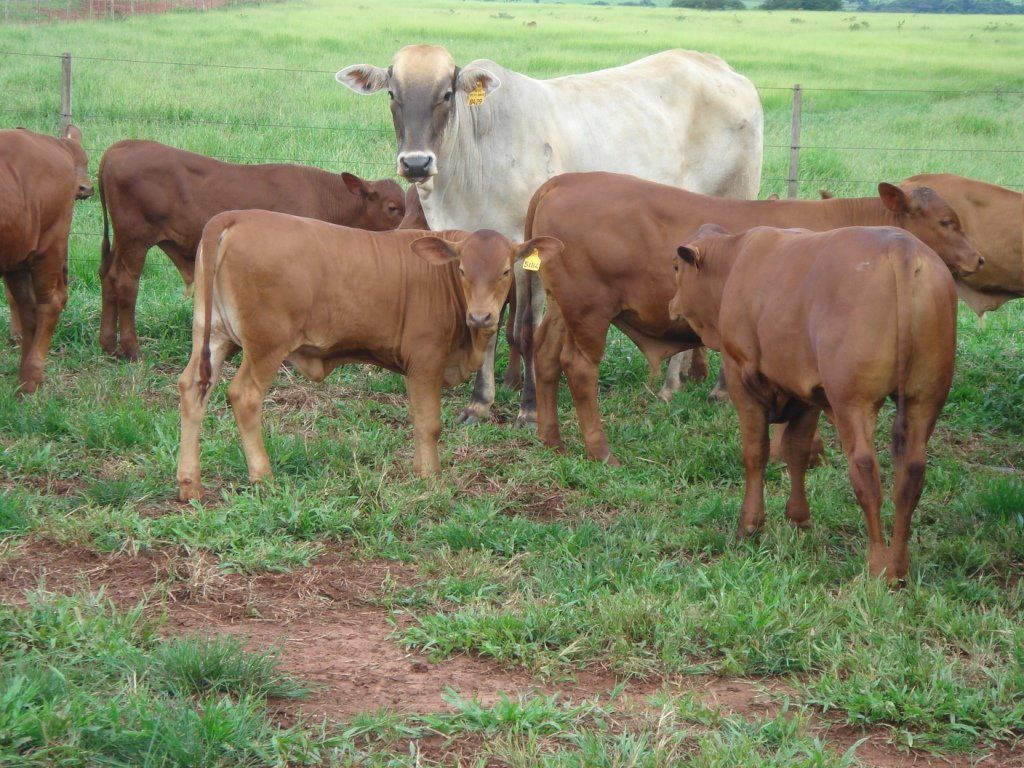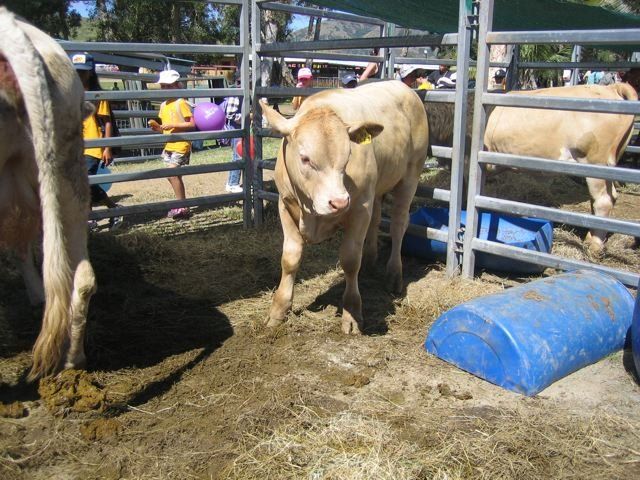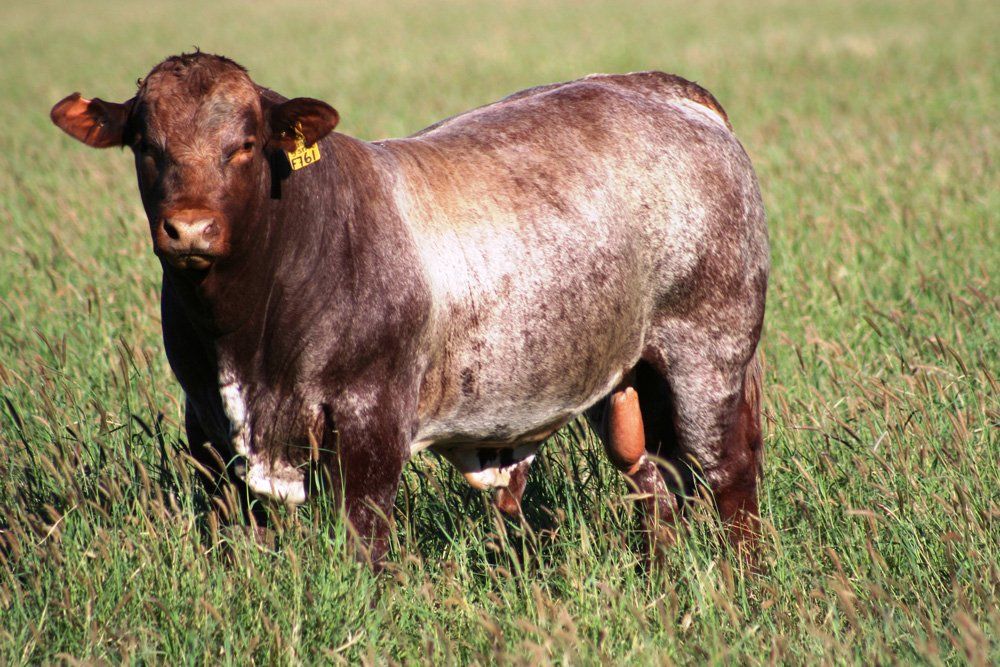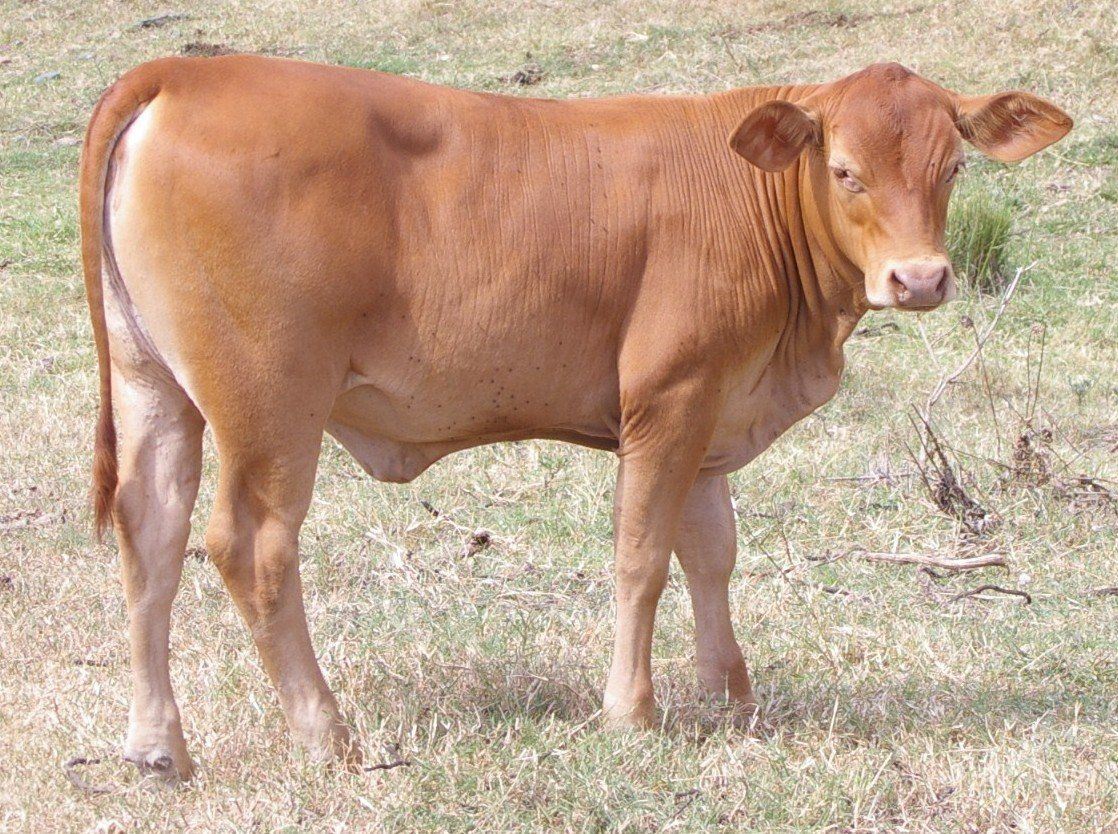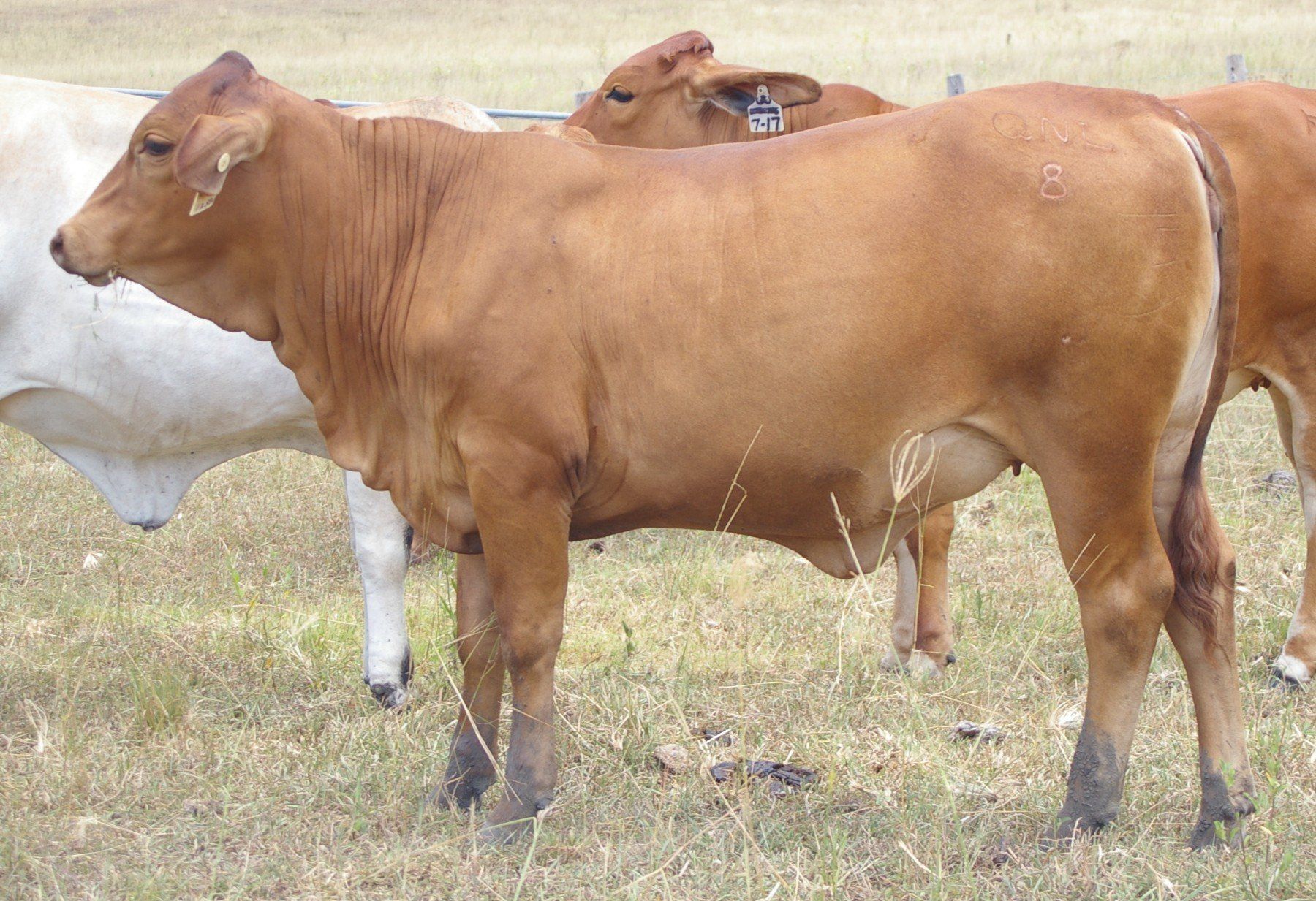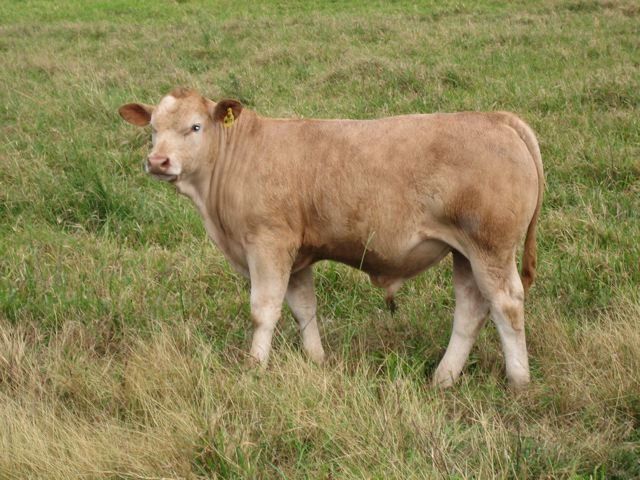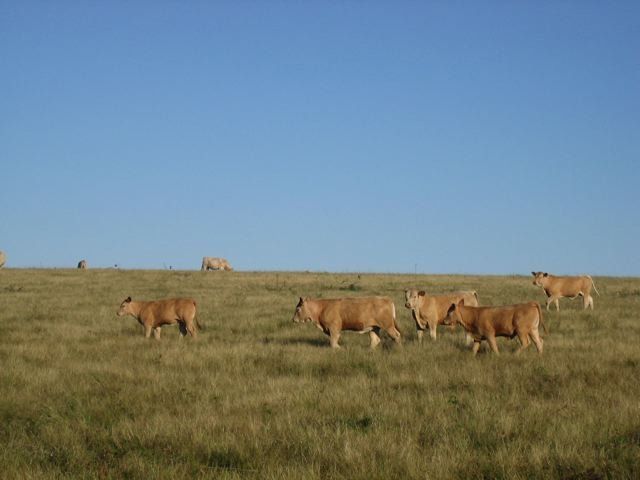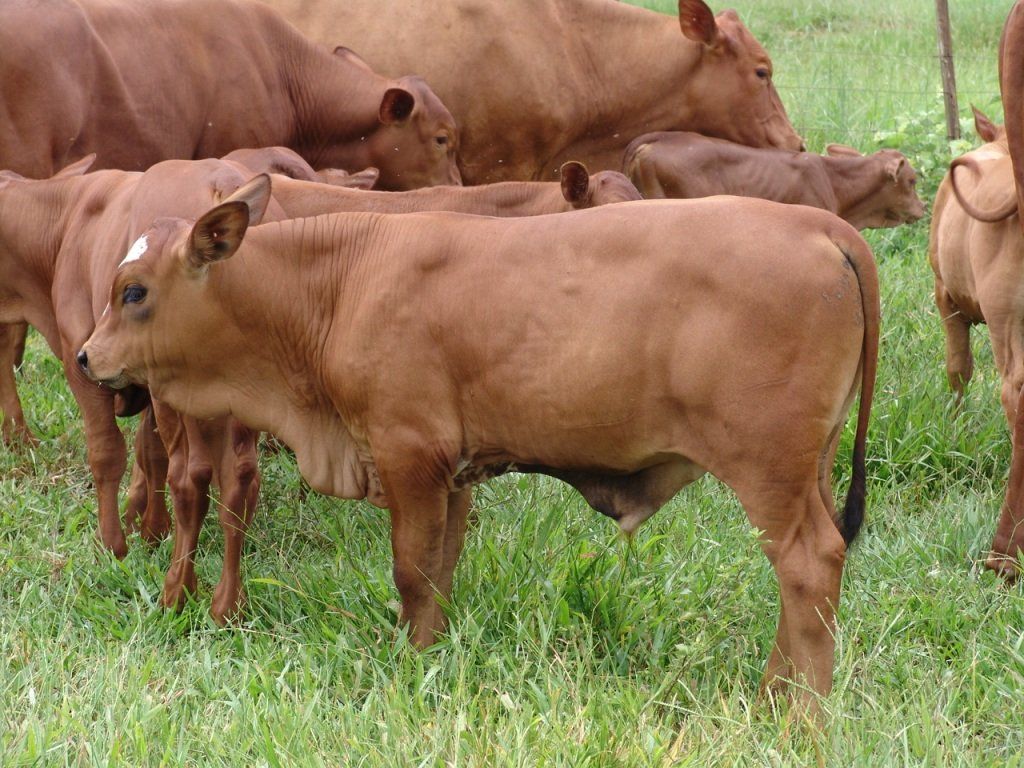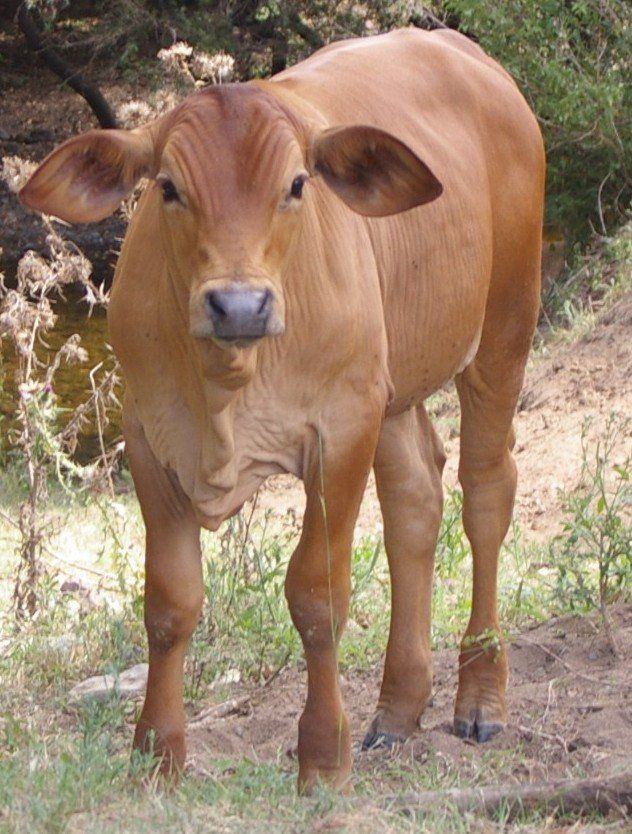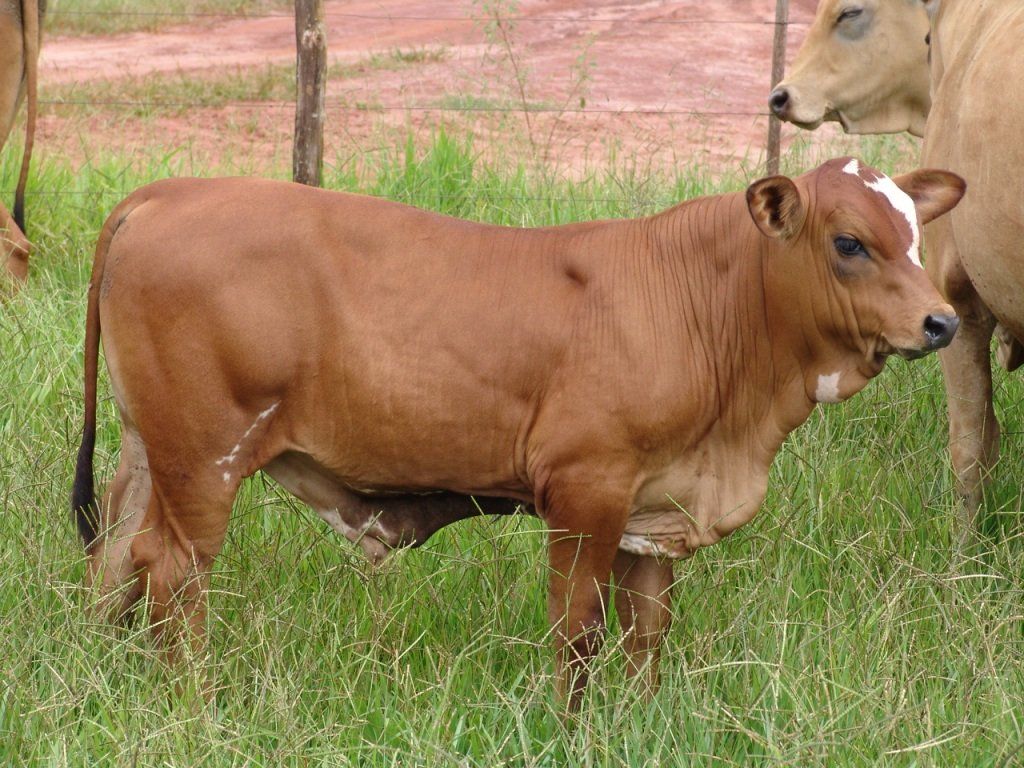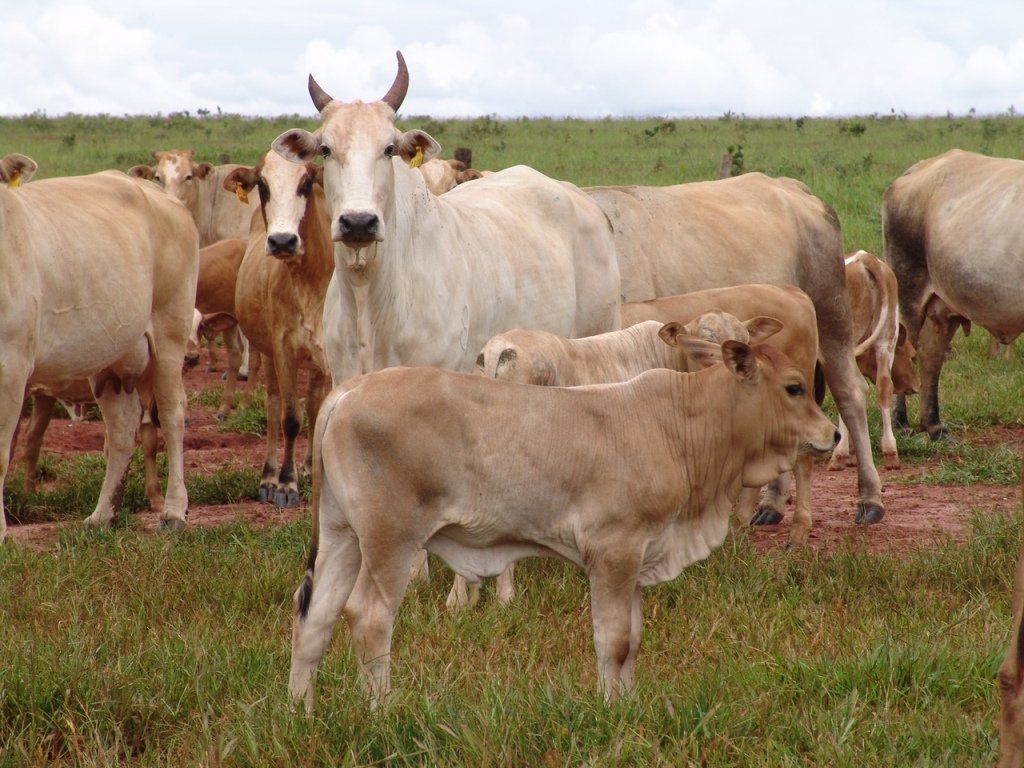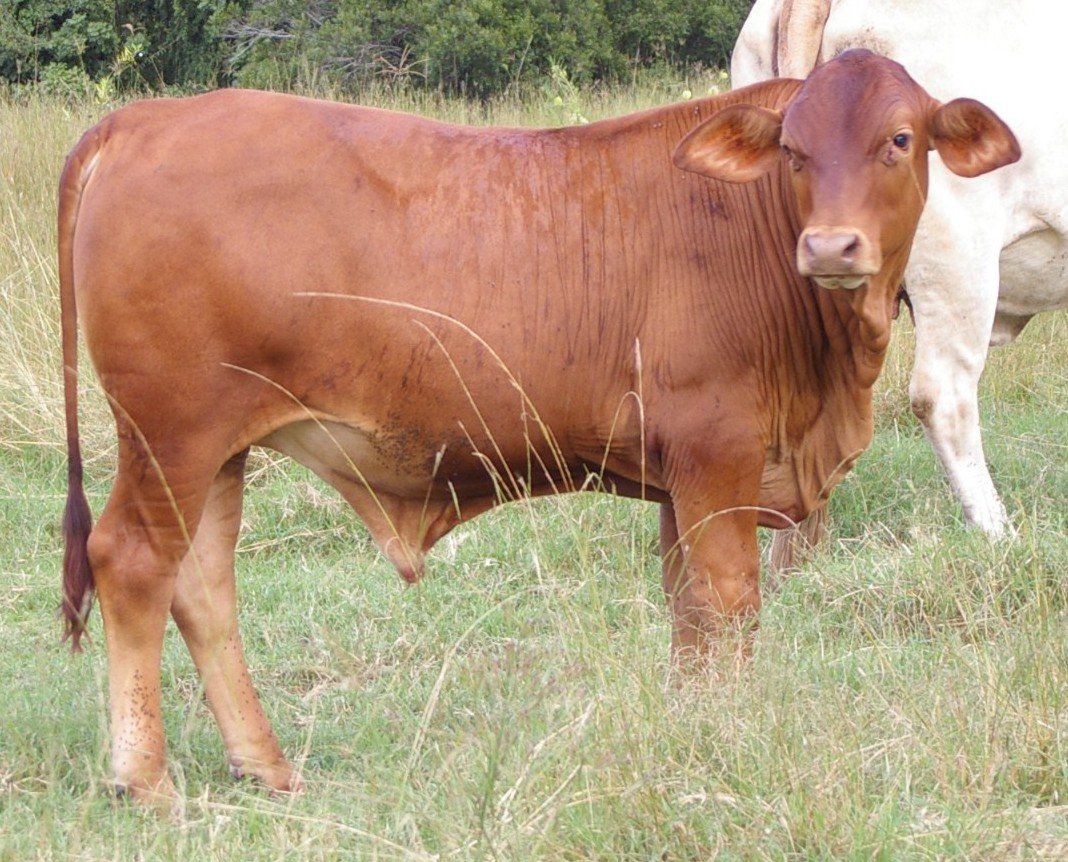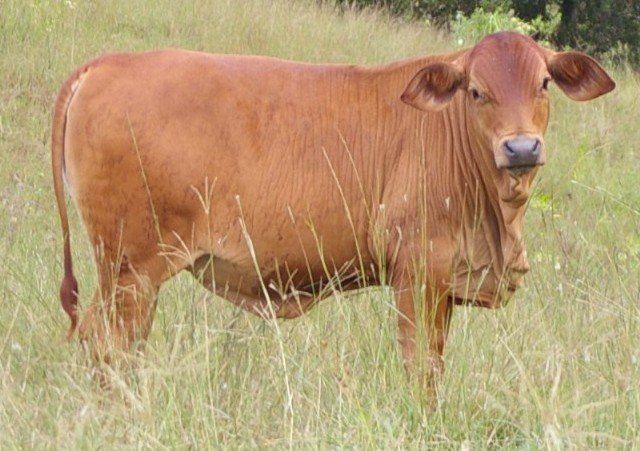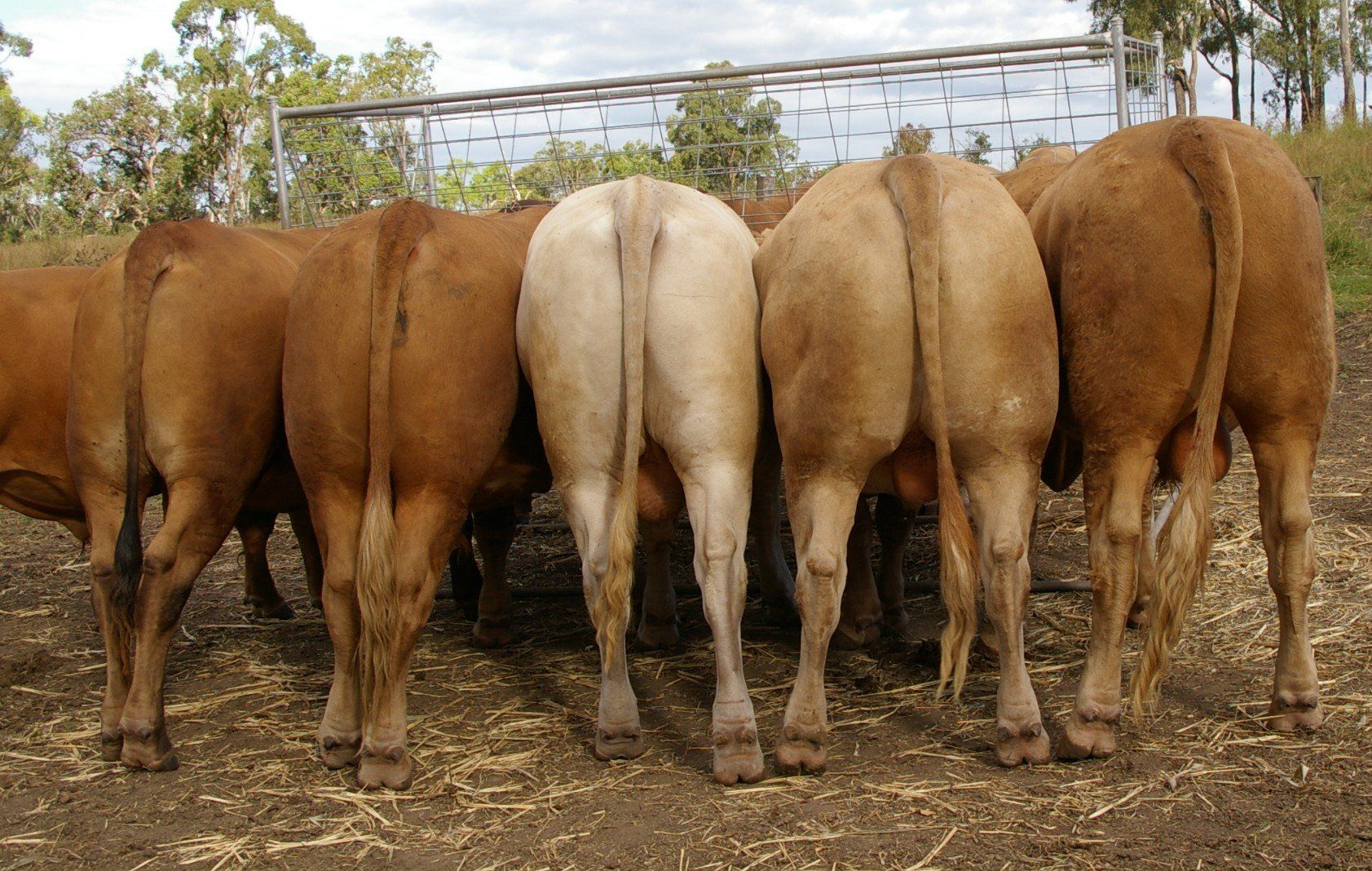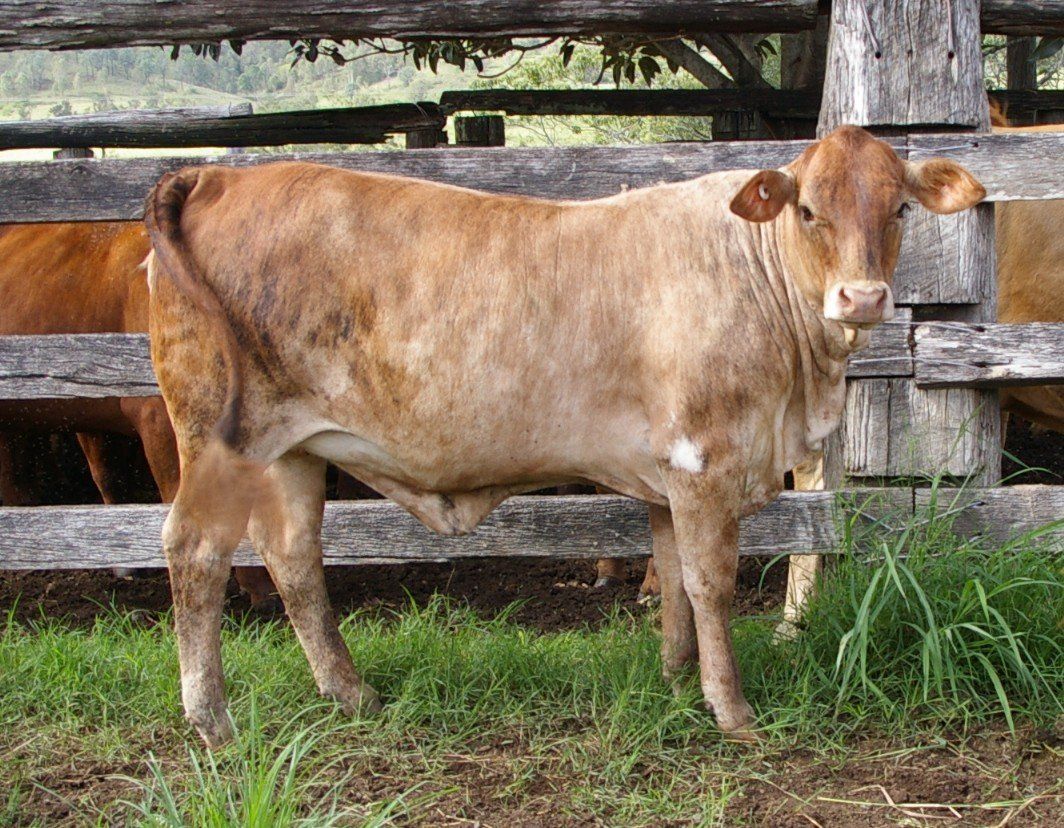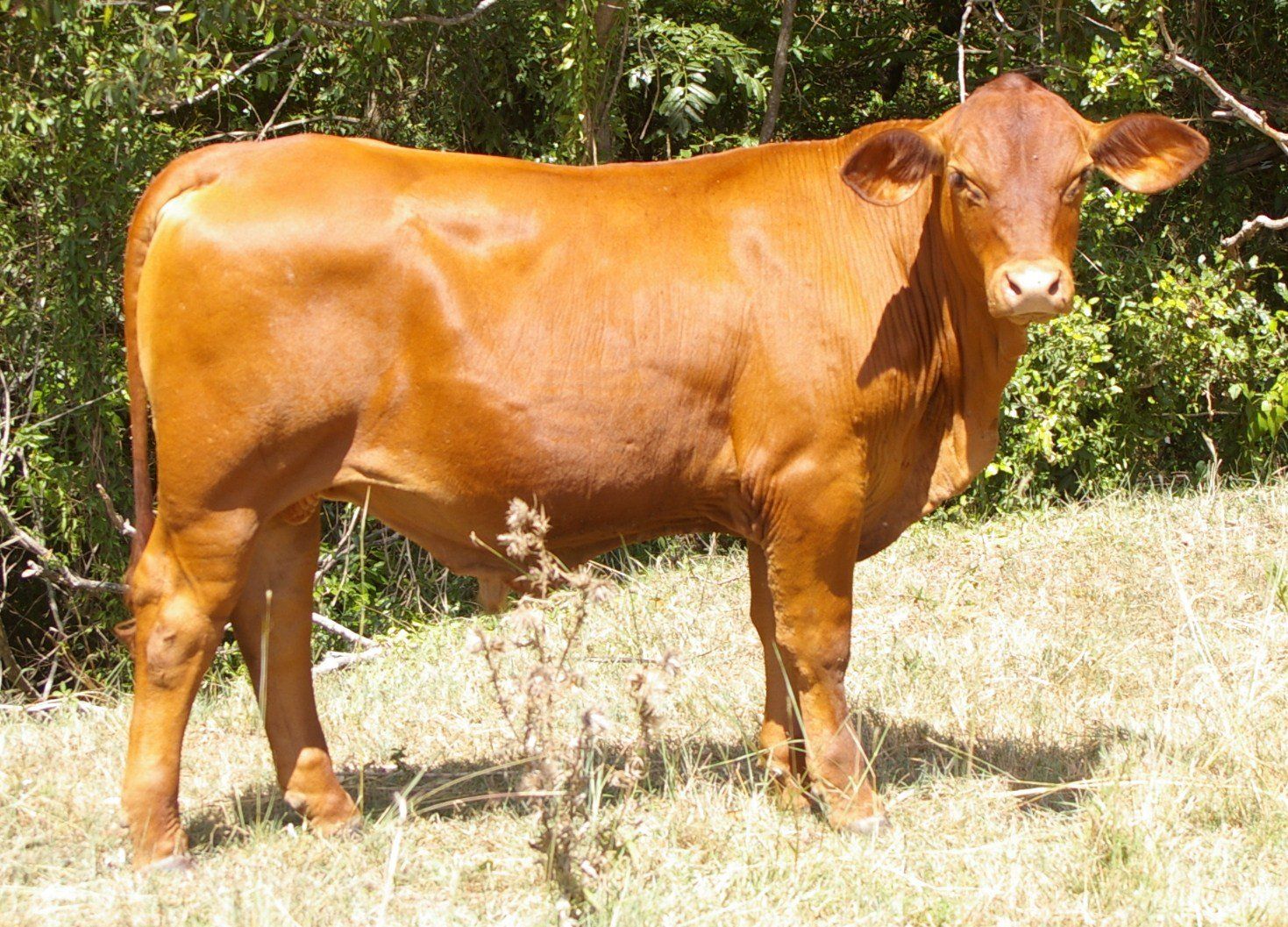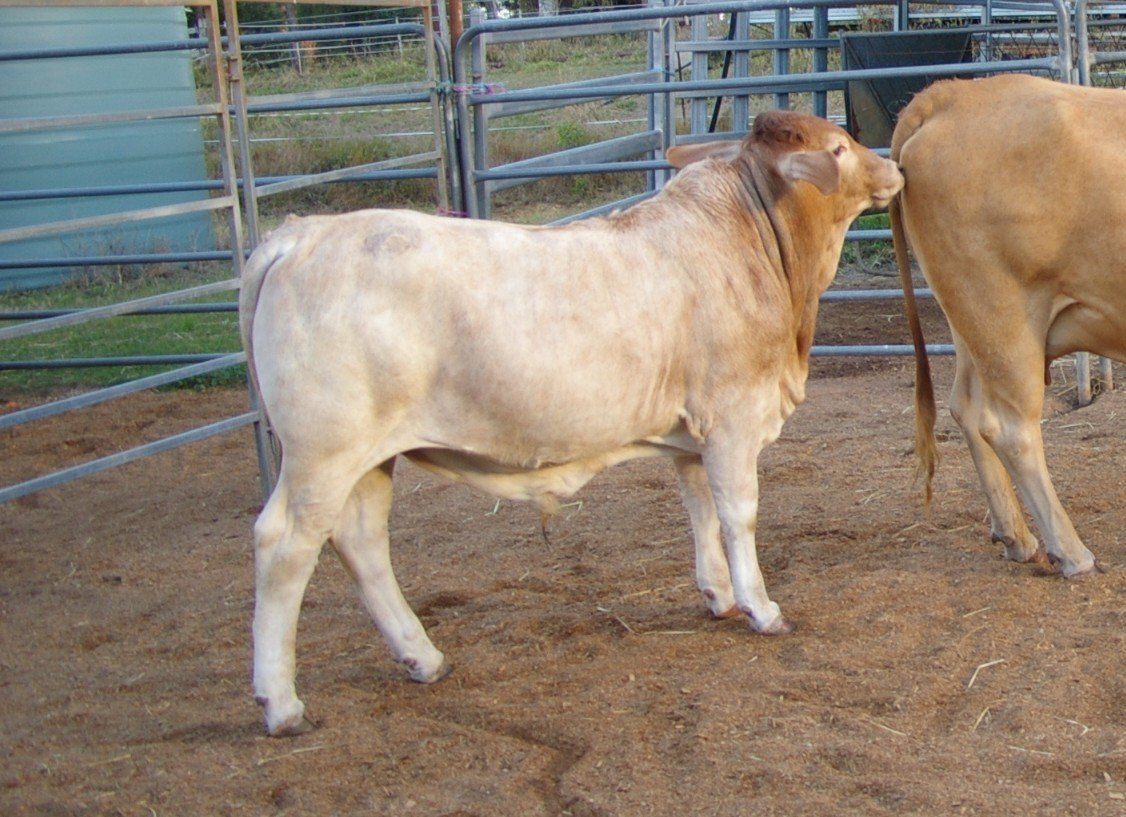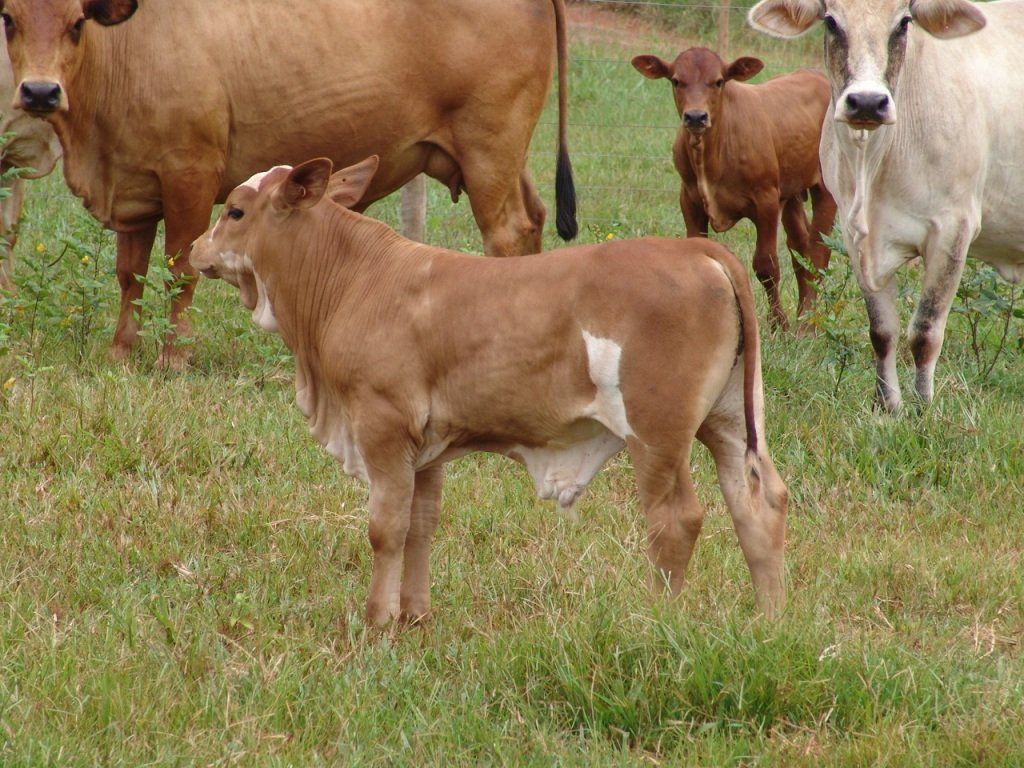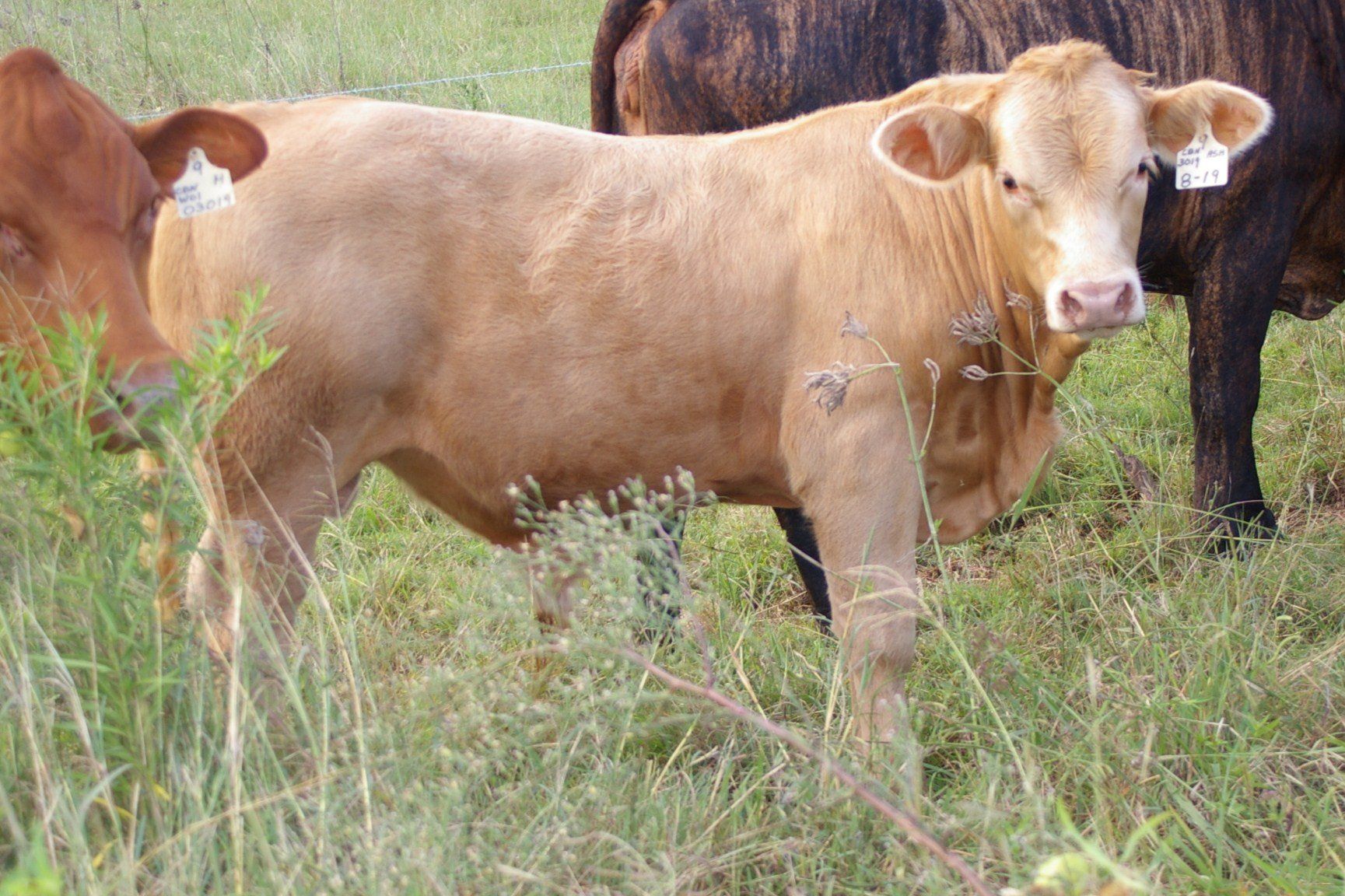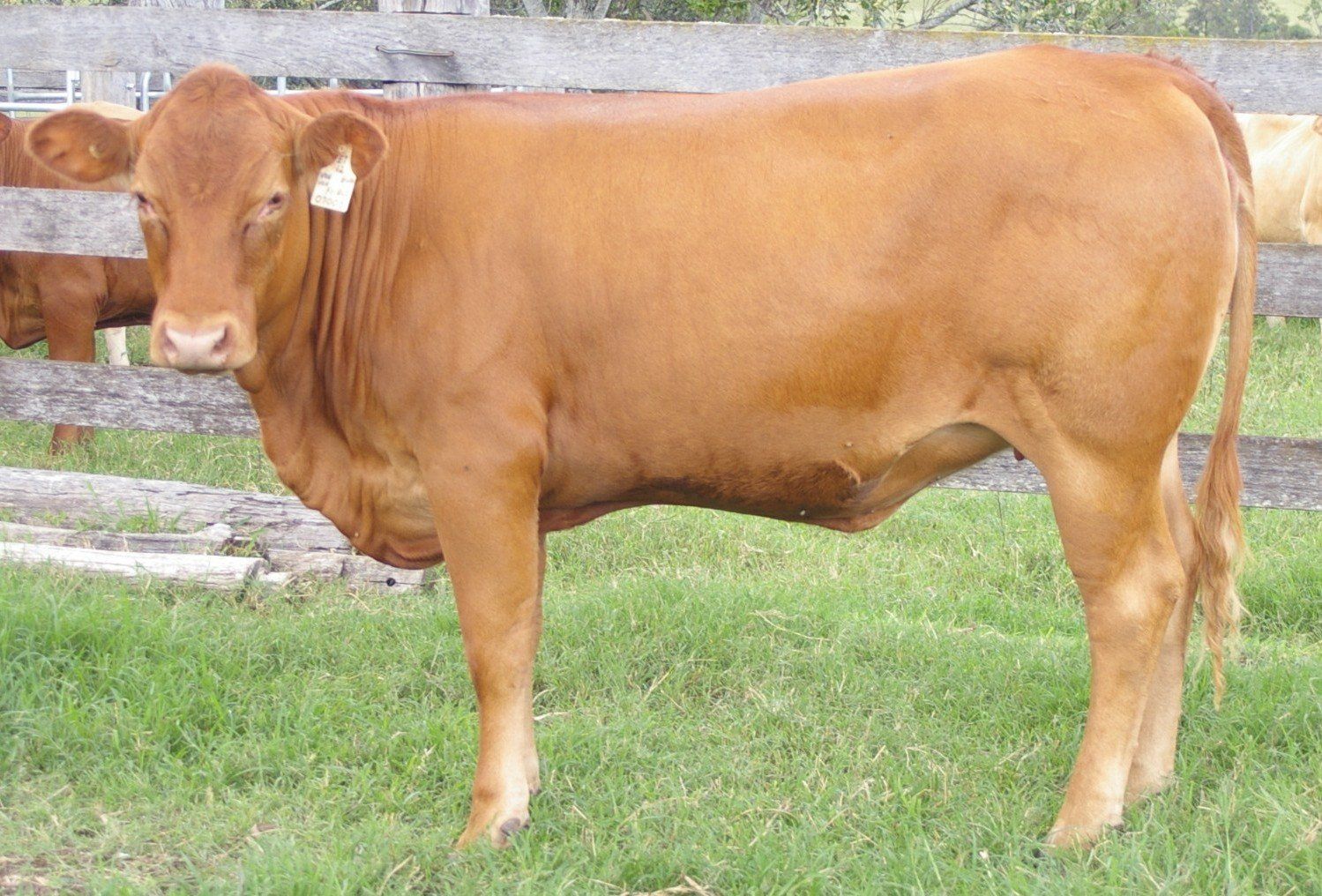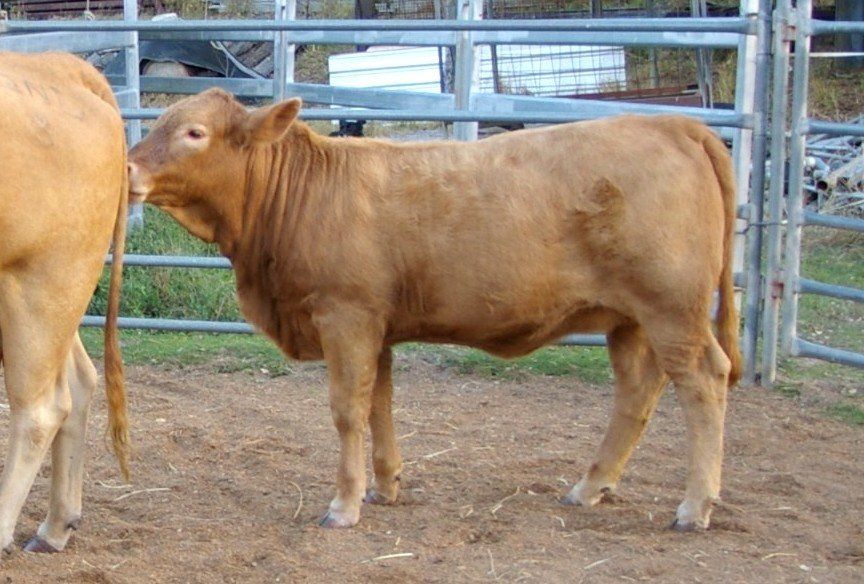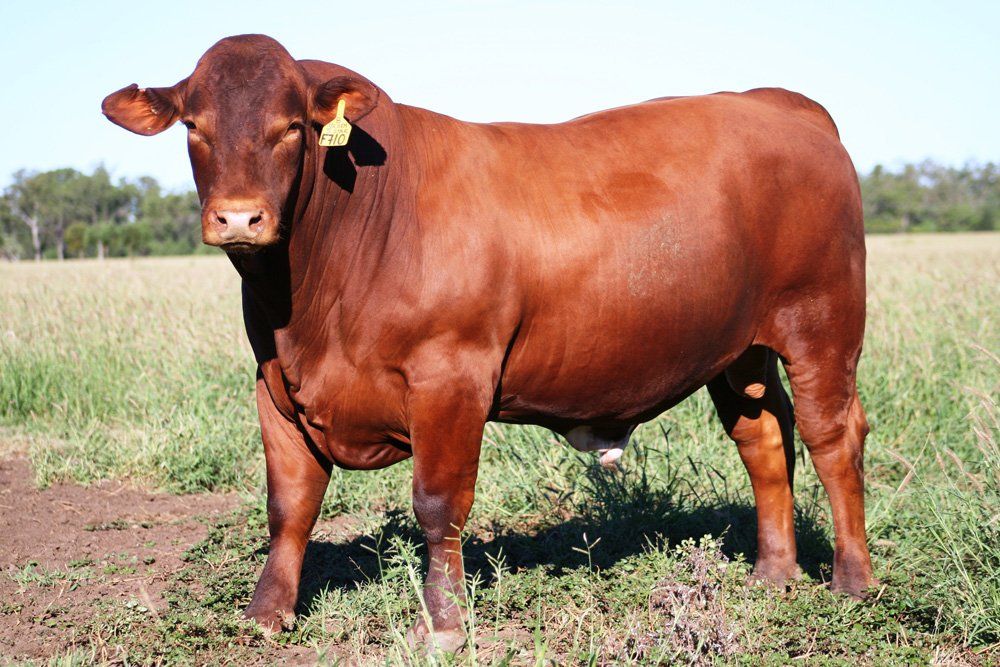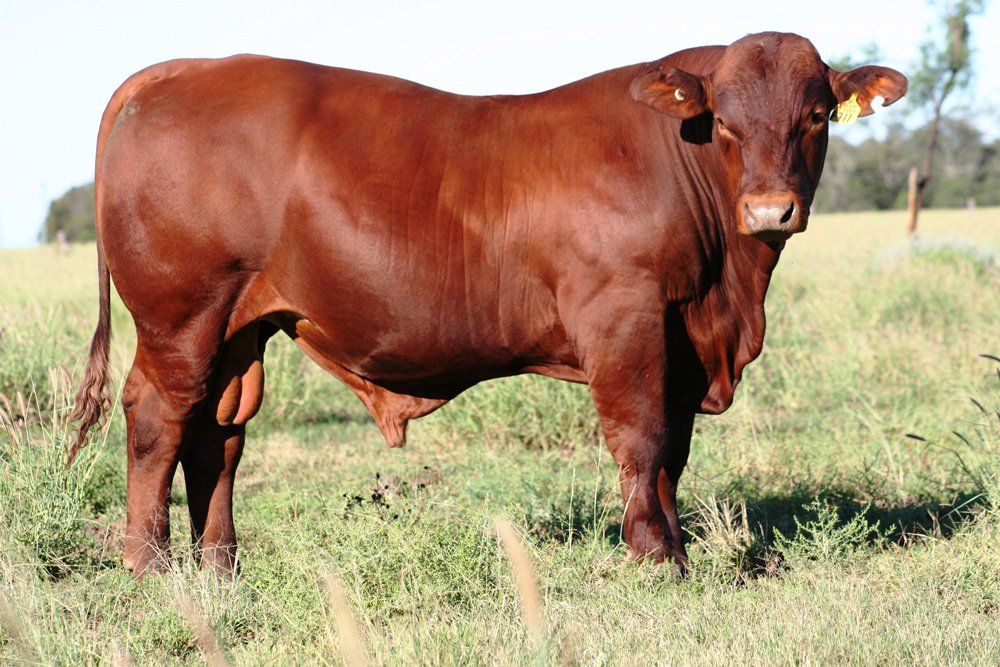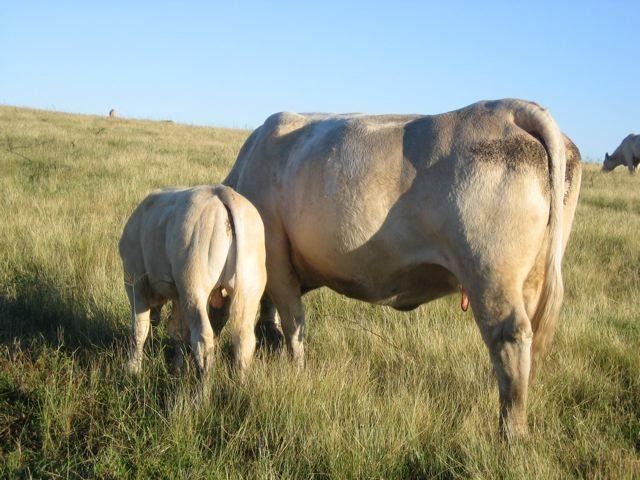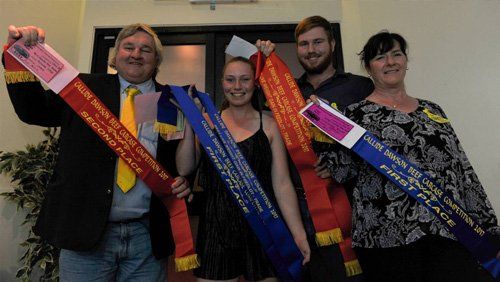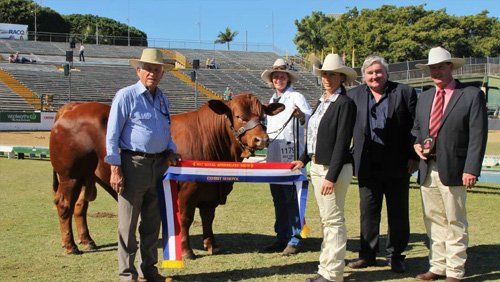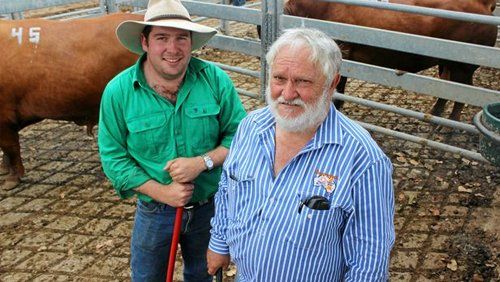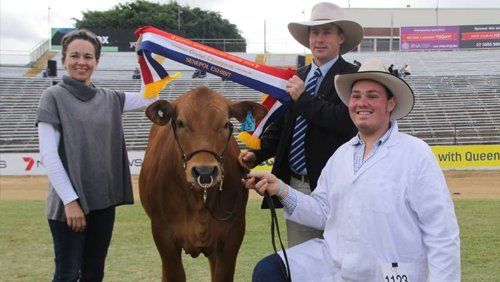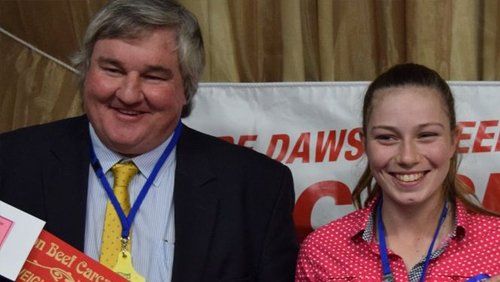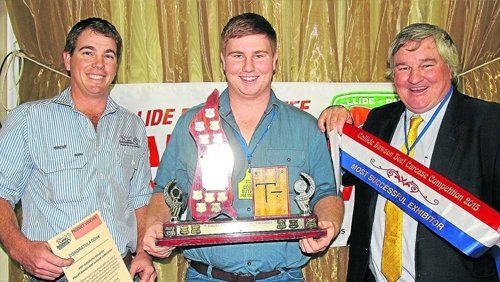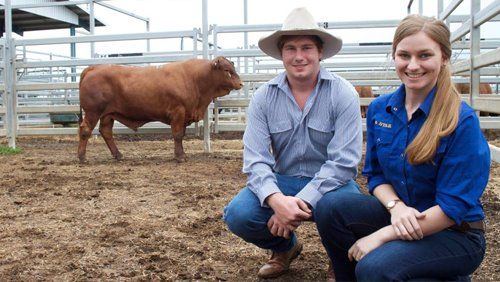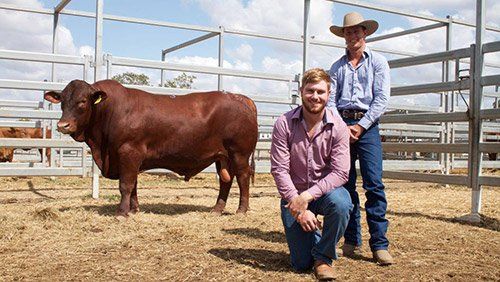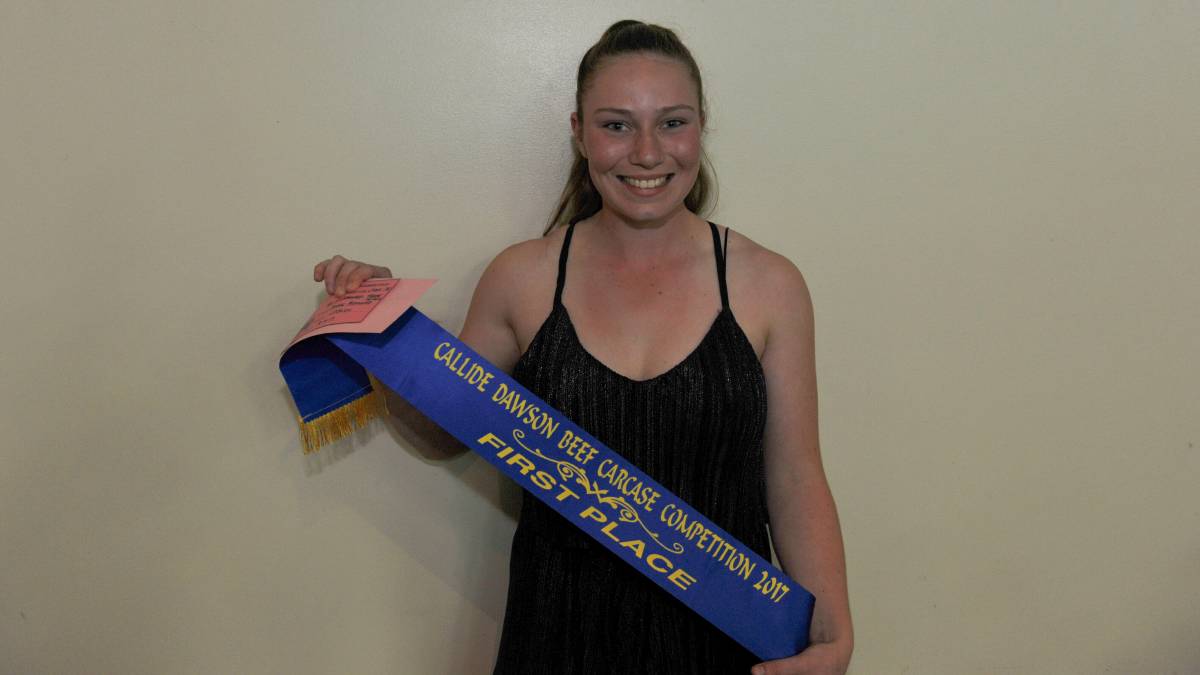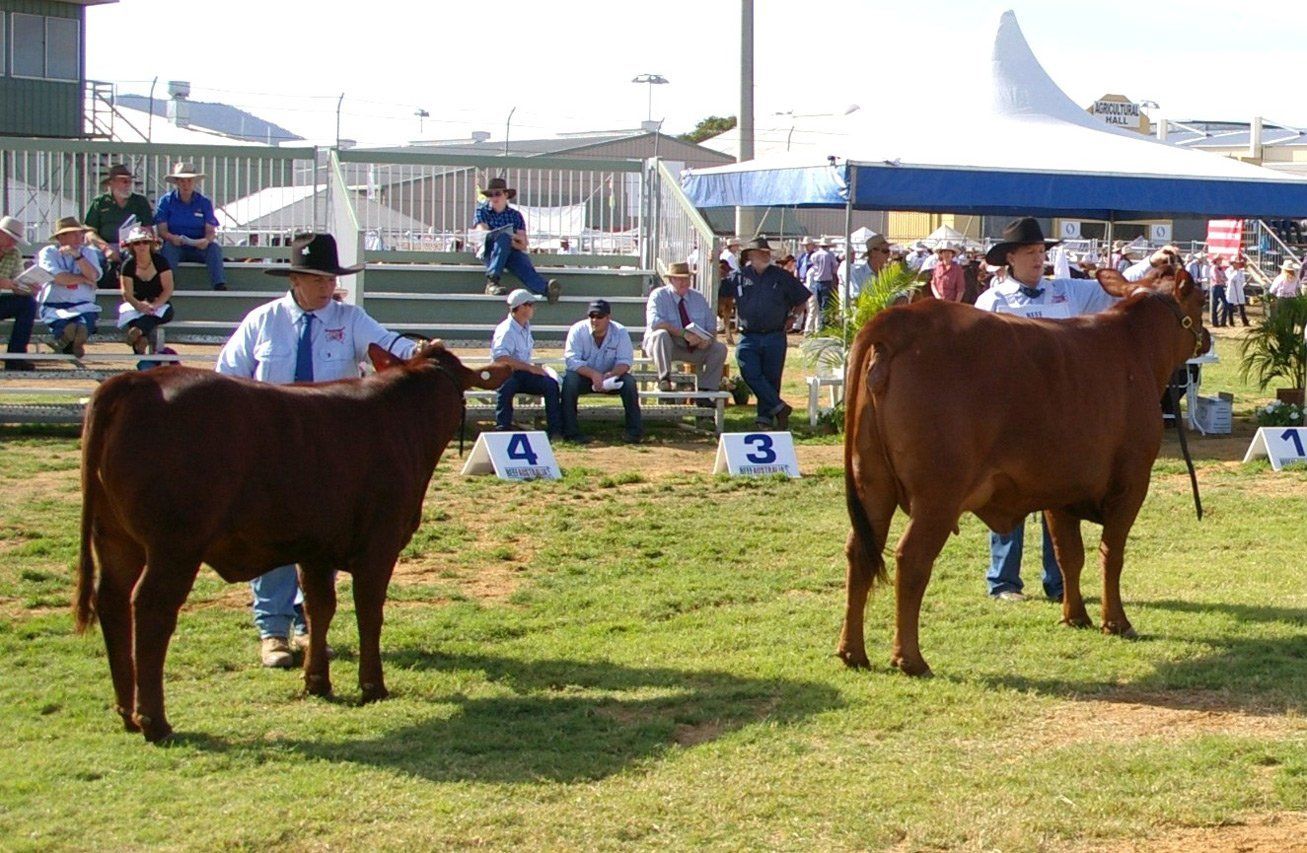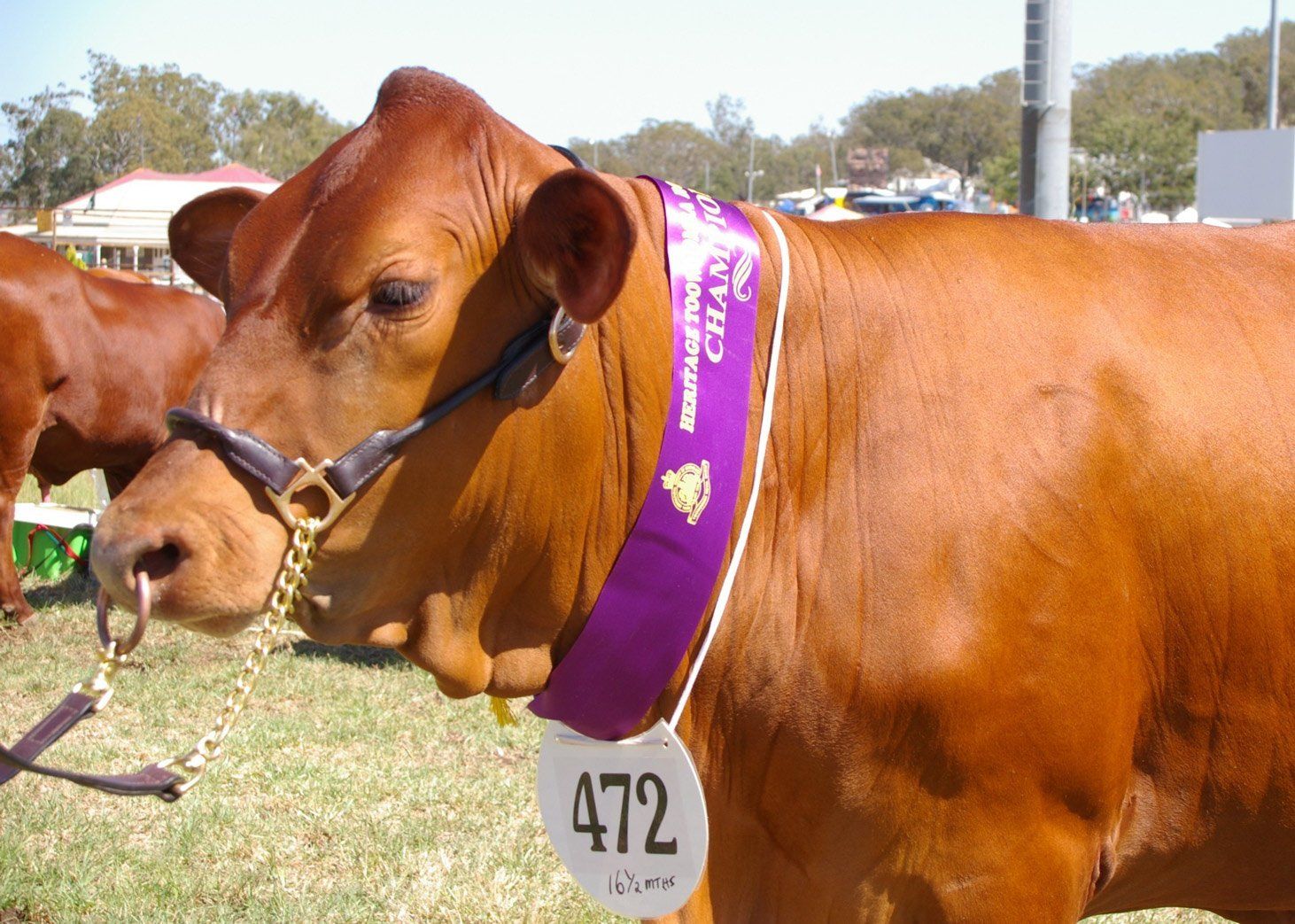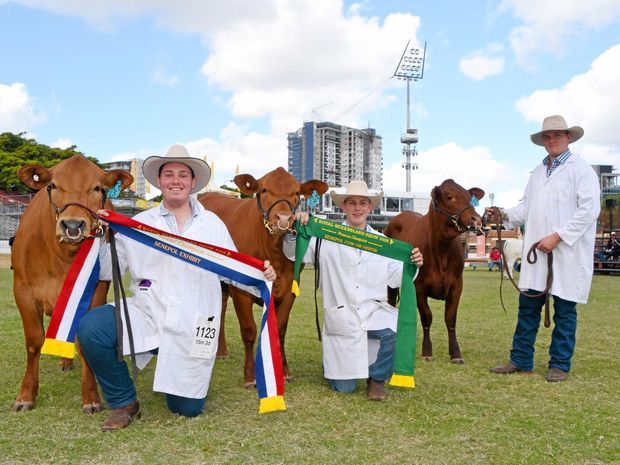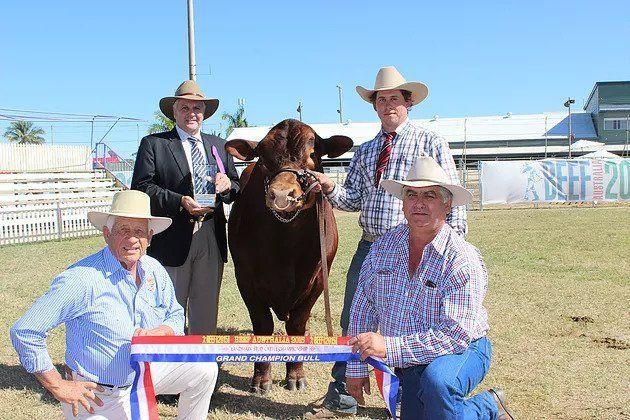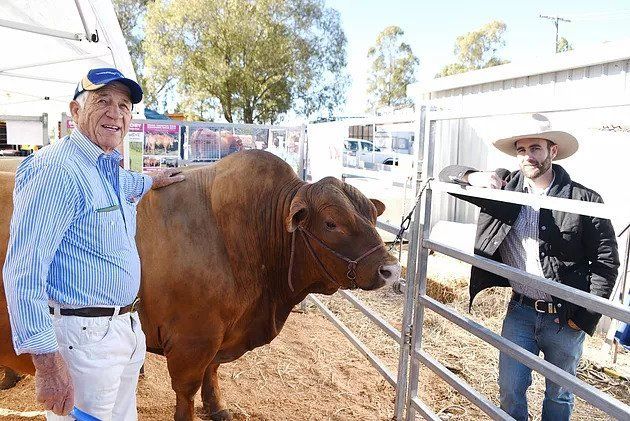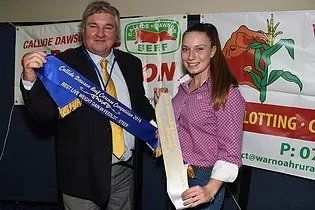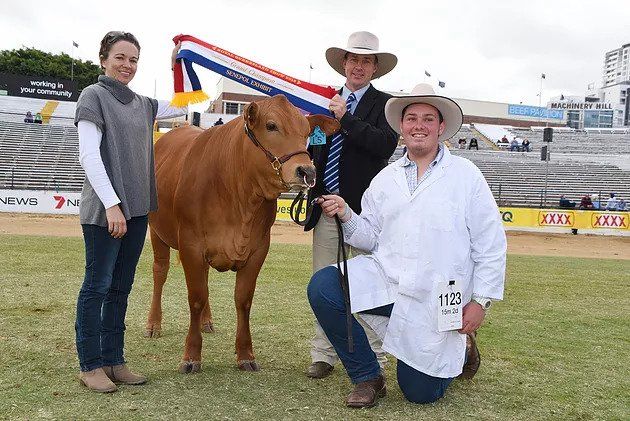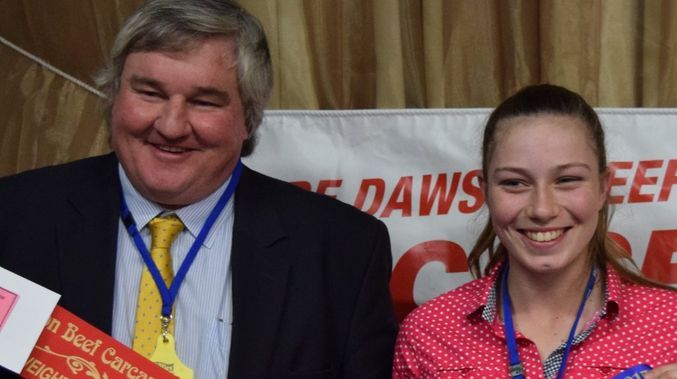"Although it is a relative newcomer to Australia, the Senepol breed has already made a significant contribution to the northern cattle industry."
Don Nicol Ó D.C. Nicol 2012
ORIGIN
The N'Dama, a native (Bos Taurus) of Senegal, North West Africa was crossed with the British breed, Red Poll.
The two Breed composite was developed on the island of St Croix in the Caribbean, at the beginning of the 20th Century, The result of infusing the Red Poll was a combining of the N'Dama's superior traits of heat tolerance, insect resistance and ability to thrive on poor quality forage, with Red Poll's carcase quality, high fertility, feed efficiency, quiet nature and renowned maternal and milking ability.
The Senepol has been a fixed breed now for almost a century.
BREEDING & FERTILITY
- Senepol cattle reach puberty earlier than Bos Indicus breeds
- Females are renowned for their ease of calving and calves for their fast 'get up and go' vigour
- Average birth weight of calves is 34kg
- Heifers will calve as two year olds under normal management conditions
- Breeder longevity is well documented, with breeders often still efficiently producing calves well into their teen years
- Average mature weight of cows is 550-650kg at pasture
Udder Quality
You can expect the Senepol genetic influence to improve the udder quality in females
Bulls
Mature bulls average 930kgs at pasture.
Senepol Bulls have a high libido, are fertile and active breeders from an early age.
CARCASE QUALITY
Meat Standards Australia had an opportunity to include 11 Striploins from a consignment of Senepol composite cattle in it's Consumer Testing Program.
These samples were tested as part of 108 cuts which were selected according to MSA protocol to include a range of quality and linkage to the database.
The Senepol results were excellent, with the samples averaging 4 Star eating quality. No samples failed four scored in the upper end of 3 Star, six samples were 4 Star and one sample scored 5 Star.
This is an unusually high result for striploins according to Rod Polkinghorne, Research and Development, Meat Standards Australia.
CHARACTERISTICS
The development of the breed placed high natural selection pressure on structural soundness, hardiness and fertility. The island environment of St Croix encompasses both wet tropics with high humidity and rainfall and hot dry savannah country.
Tropical parasites and cattle tick are abundant and the native feed low in quality. This 'home' of Senepol has produced a tough adaptable breed of cattle with the ability to thrive under harsh conditions, maintaining fertility, tropical resistance and feed efficiency whilst producing an excellent eating quality carcase.
Senepol are best described as being of medium frame - extremes of muscle and bone having been avoided in striking a workable balance of feed efficiency to growth, fertility and calving ease.
CROSS BREEDING
Senepol offers Cross Breeders excellent hybrid vigour from a tropically adapted Taurine breed, with a genetic package which has not been subjected to unbalanced "single trait" selection.
Senepol admirably complement tropical beef production where traditionally Bos Indicus derived breeds are used. Senepol are the ideal Bos Taurus for cross breeding with British and European breeds in hotter country and for use in the development of tropical composite herds.
Amongst northern producers who have used Senepol genetics, there has been strong focus on its use in composite breed development and cross breeding.
Two popular crosses have been Senepol x Angus and increasingly Senepol x Charolais to produce sleek-coated, adapted hybrid bulls for northern cross breeding programs.
The breed is a carrier of a genetically dominant ‘slick-coat’ gene that confers similar heat resistance to Brahmans to animals with one or two copies of the gene. US researchers have mapped the gene to chromosome 20 and in time a DNA test may be developed.
It is believed that Senepol is the only breed in Australia that carries this particular gene.
Senepol and Senepol-derived bulls are being used today in cross breeding programs across Queensland and the Northern Territory and in Western Australia.
Some of our crossbred
CROSS BREEDING PROGENY
The progeny resulting from cross breeding with Senepol have a significant economic advantage through their inheritance of senepol traits:
- Females reach puberty earlier than Bos Indicus breeds
- Slick coat gene- confers a very short haired, sleek coat. Senepol is the only breed available in Australia that is known to be a carrier of this gene
- Strongly polled
- Heat Tolerance
- Disease and Insect resistance
- Solid red colour, ranging for dark red to a lighter honey colour
- have good eye and skin pigmentation
- docile temperament - being easily managed and handled in extensive pastoral conditions.
IMPORTING SENEPOL GENETICS
The initial importation of Senepol genetics into Australia was via semen from a North American bred sire ASL CR Dutchman 26E, imported by ABS Australia (now ABS Global) in 1996.
AACo was a major user of this semen in their first crosses with Red Angus and Charolais cross Brahman heifers in the early generations for their tropical composite breed when the author was Divisional Manager-Genetics and Value-adding for that company.
That bull was homozygous for the slick gene.
However it was with the importation of embryos from selected cows from Georgia, USA by the Australian Agricultural Company (AACo) to its Meteor Downs, Springsure property in late 1997 that the breed staked a permanent place in the Australian beef Industry.
AACo imported the embryos to widen the gene pool and as a contributor to planned composite breeding programs they had initiated a few years previously. AACo imported a second consignment of embryos in 1998 including the first ever embryos collected on the island of St Croix. They also imported three Senepol bulls from USA in July 1999, which were used in the bull-breeding unit at Brunette Downs in the Northern Territory.
The first fullblood calves from these embryo importations were born in October 1998.
5-STAR Senepols who imported 500 embryos from USA in 1999-2000 conducted the first Senepol production sale in 2003; the first Senepols were sold the year before at the Duarran sale. The first Senepols in conformation shows were exhibited at Beef 2003.
EXPORTING SENEPOL GENETICS
The first Senepol semen was exported by 5-STAR to PNG in 2005.
Senepols have been exported to Vanuatu and in 2007 the author’s company Breedlink coordinated the live export of 39 Senepols being 24, 1 and 2-year-old bulls and 15 heifers from Caribbean Senepols to New Caledonia (NC).
Reports suggest the early impact of the breed in NC as measured by their calves out of Limousin and Charolais females is very positive.
In 2011 Caribbean and 5-STAR Senepols combined to export embryos to New Caledonia and after a successful transfer and pregnancy test, the calves are due at the time of writing.

